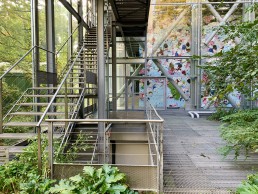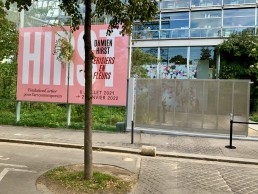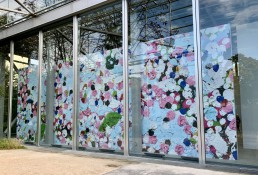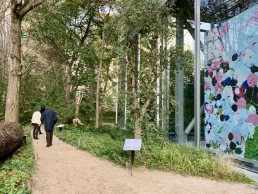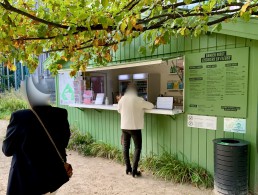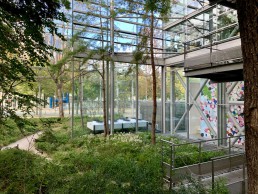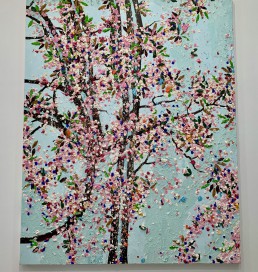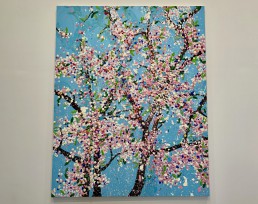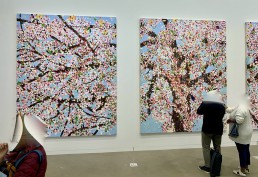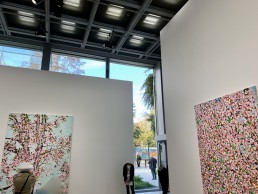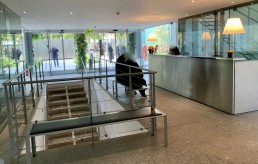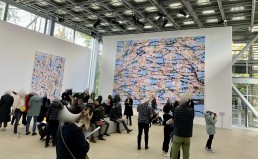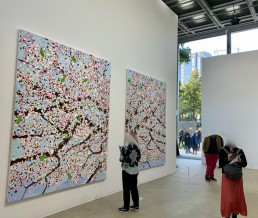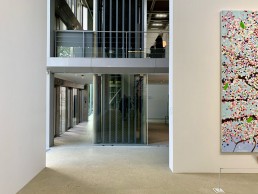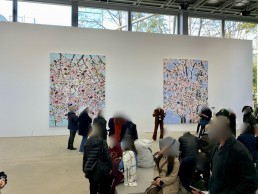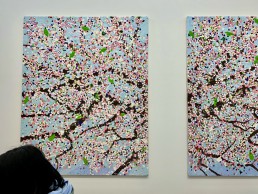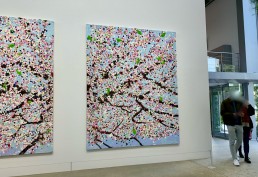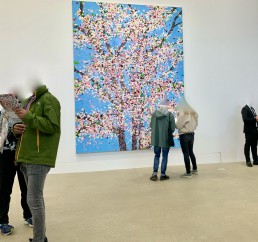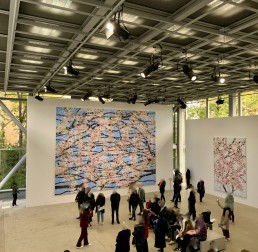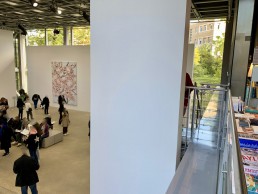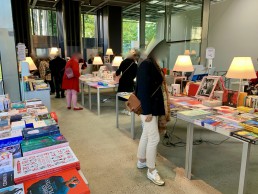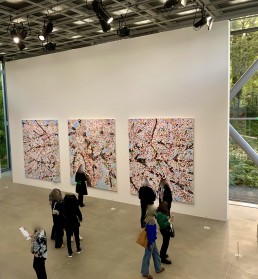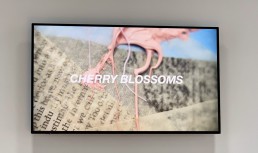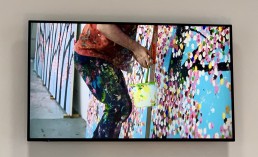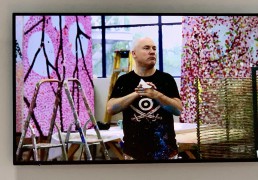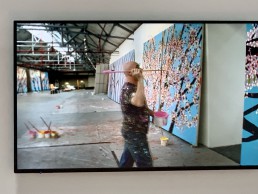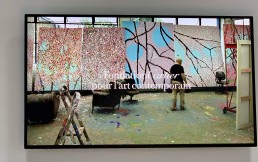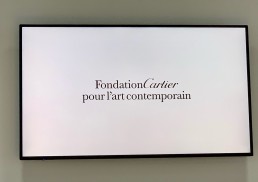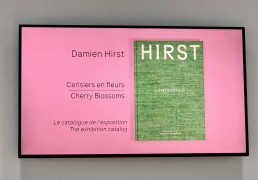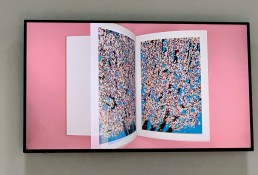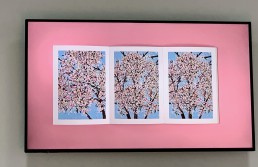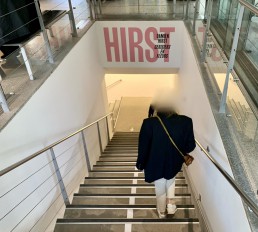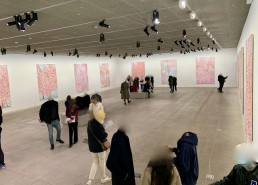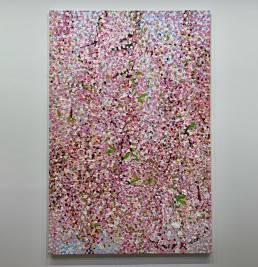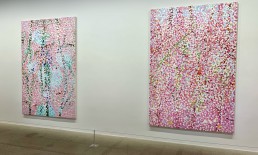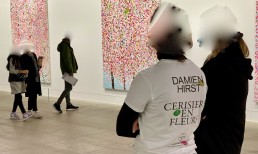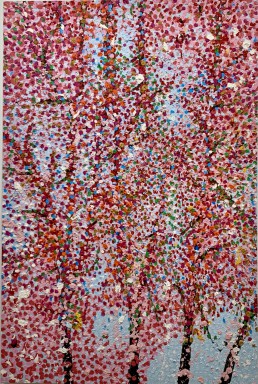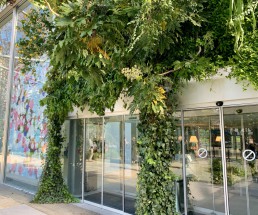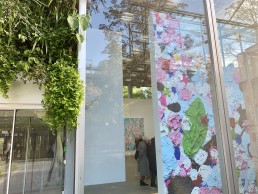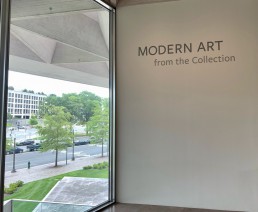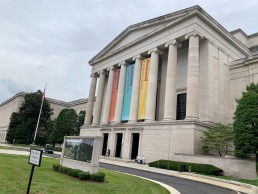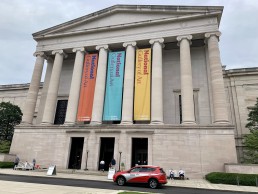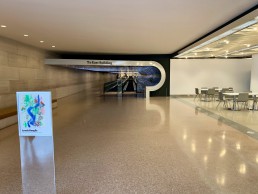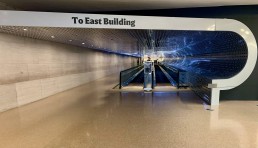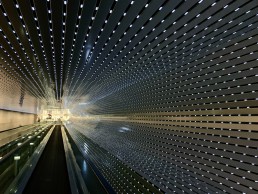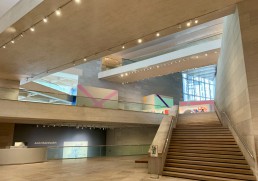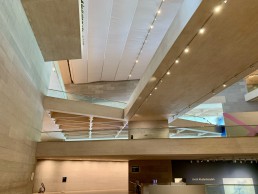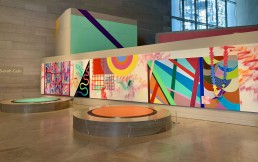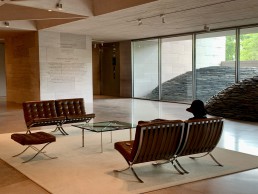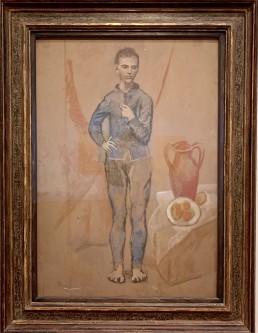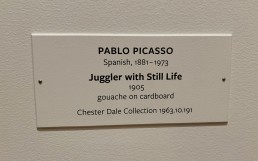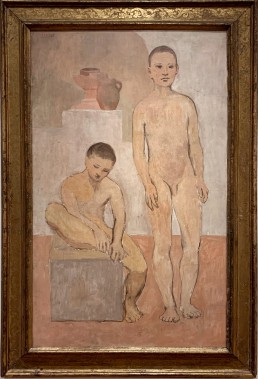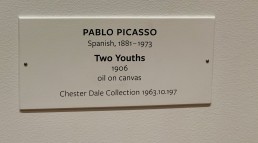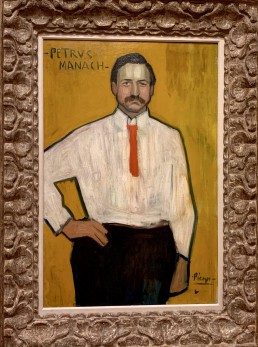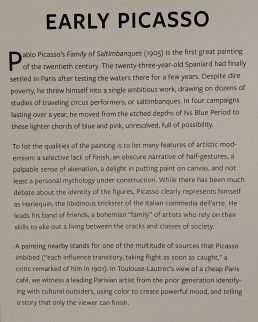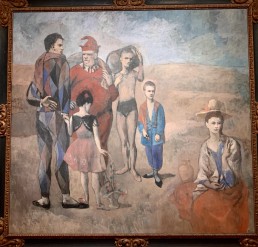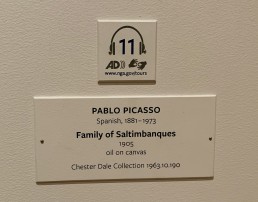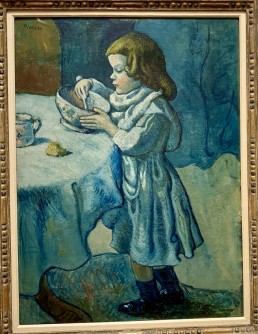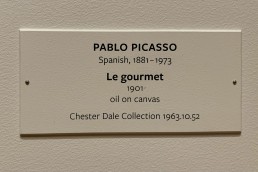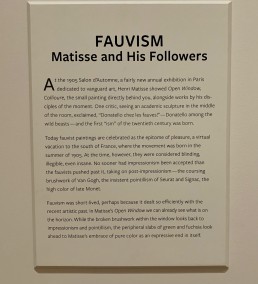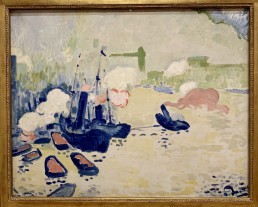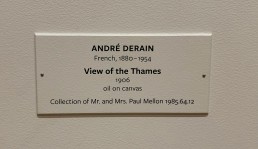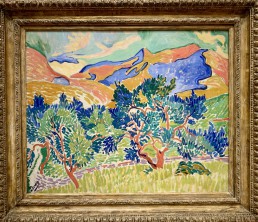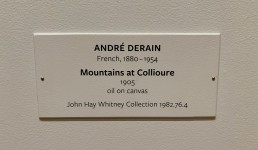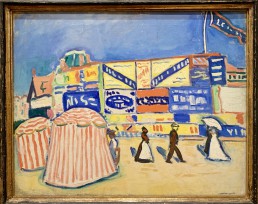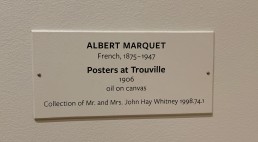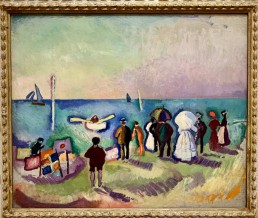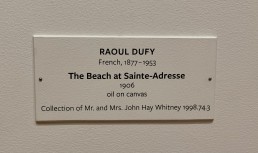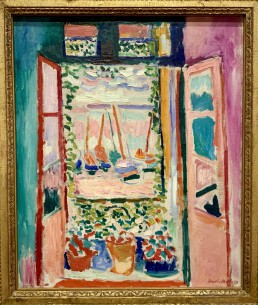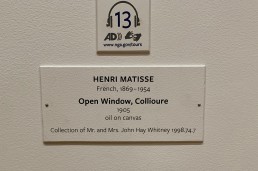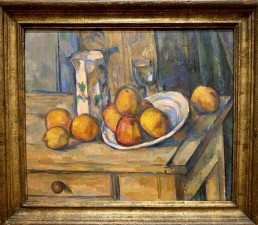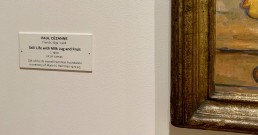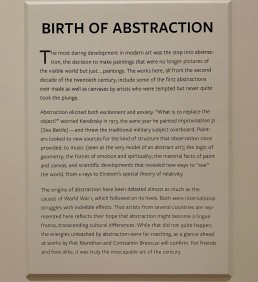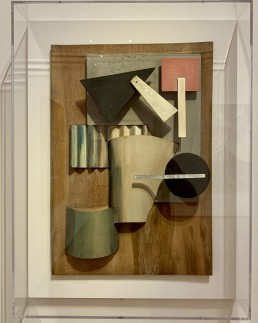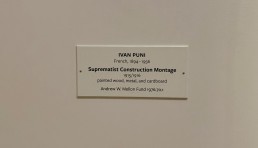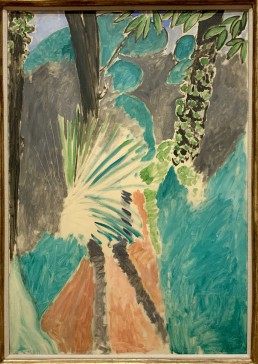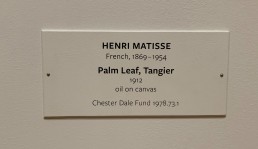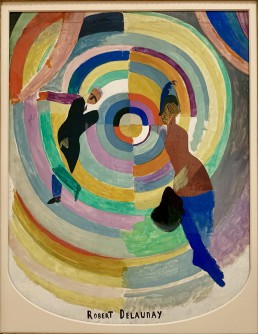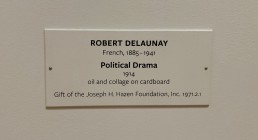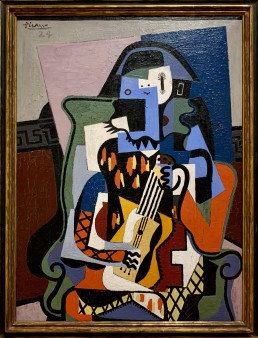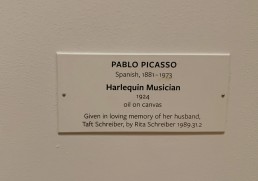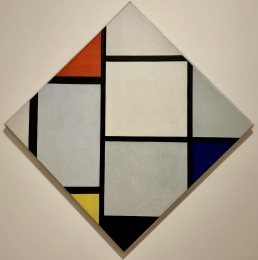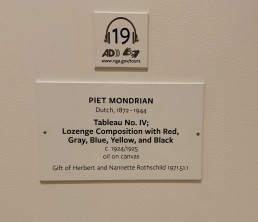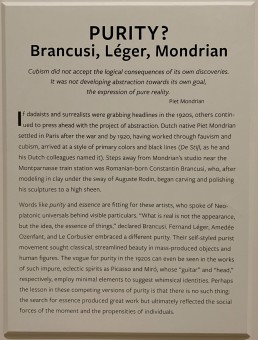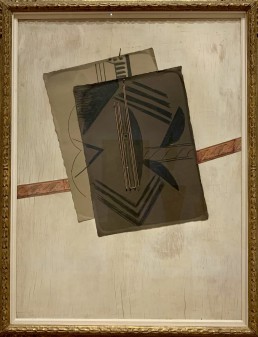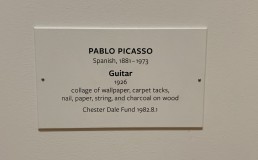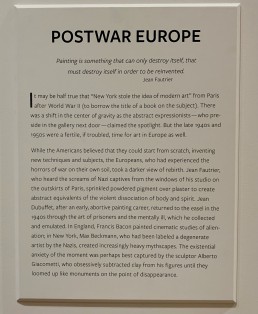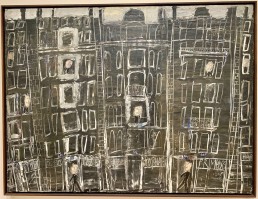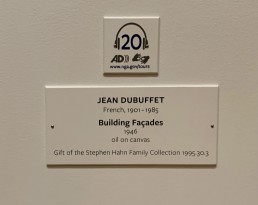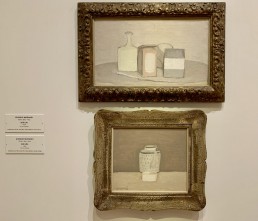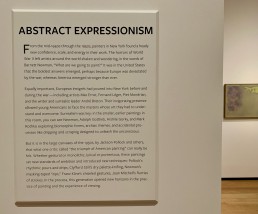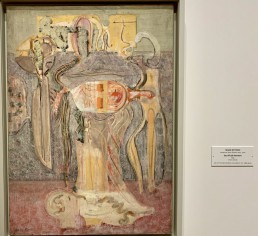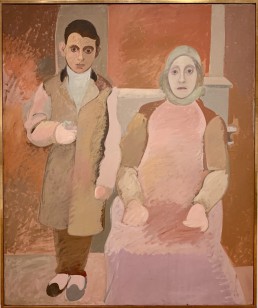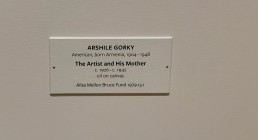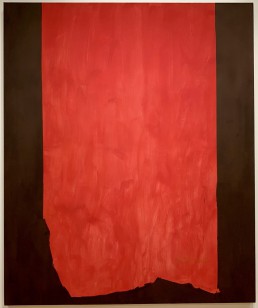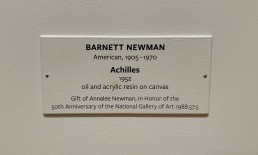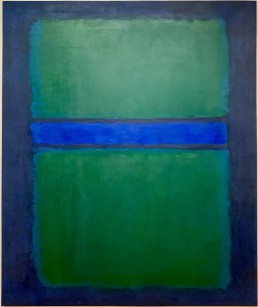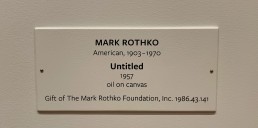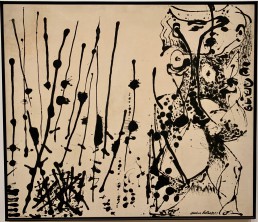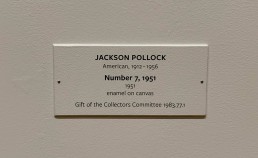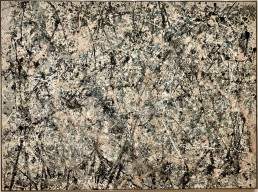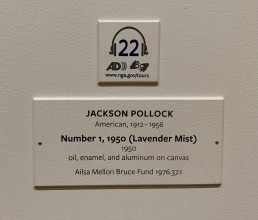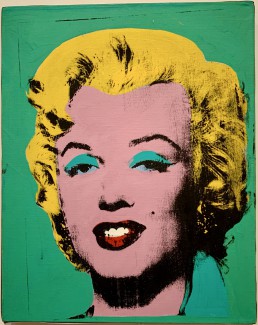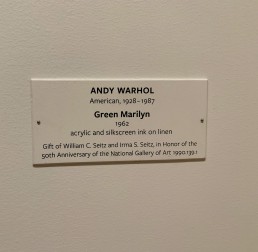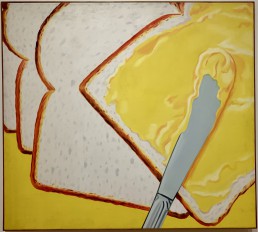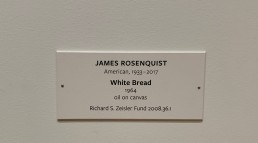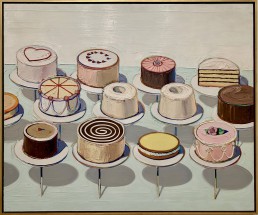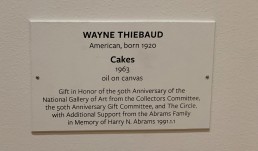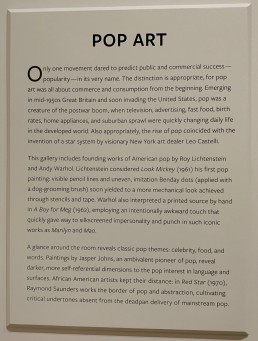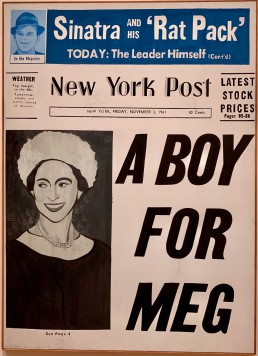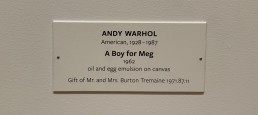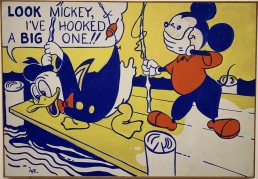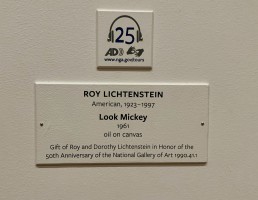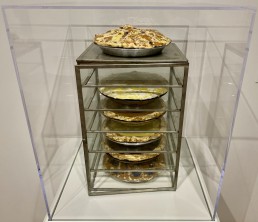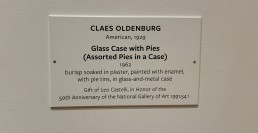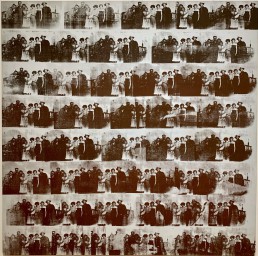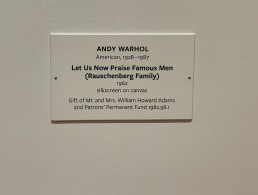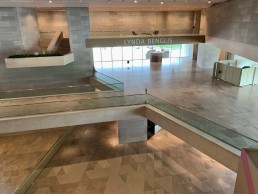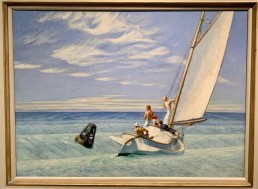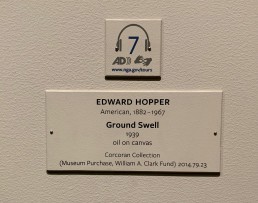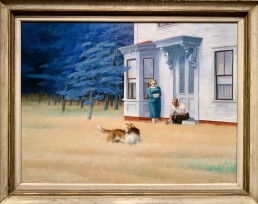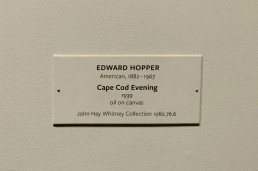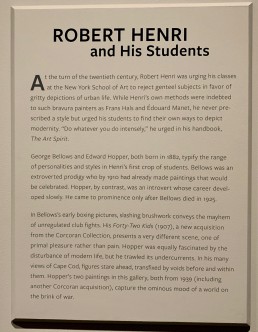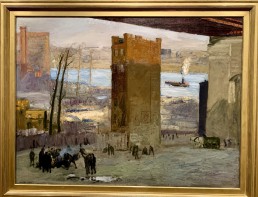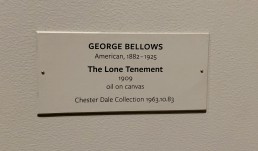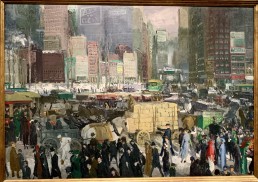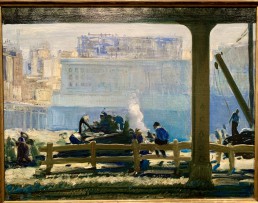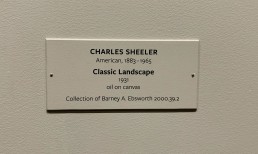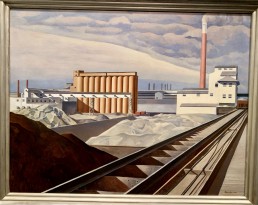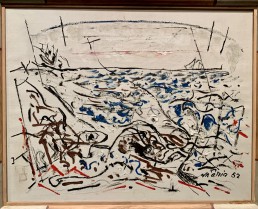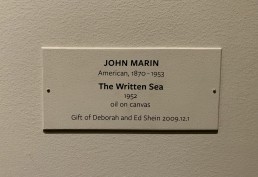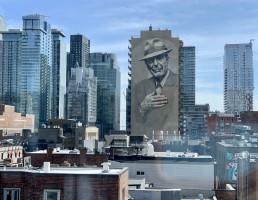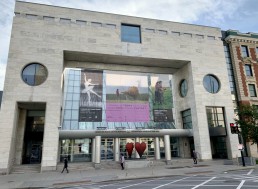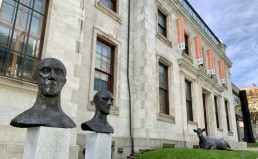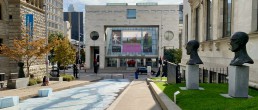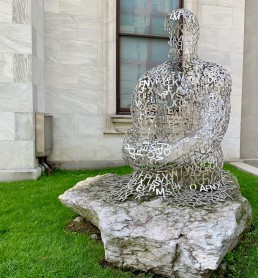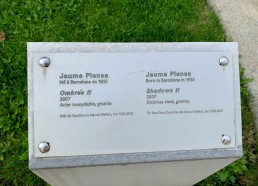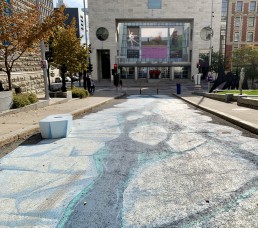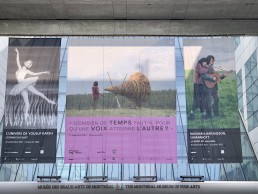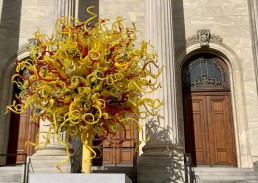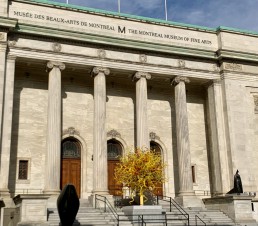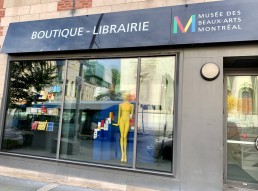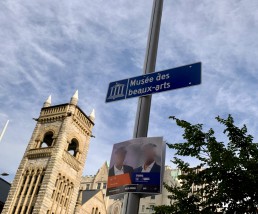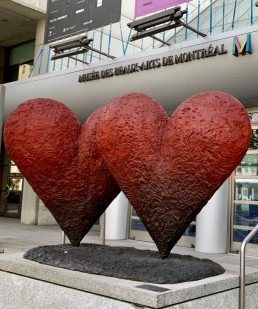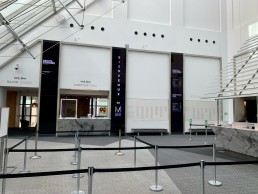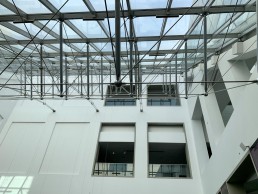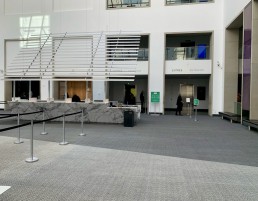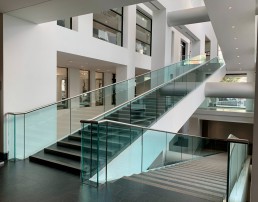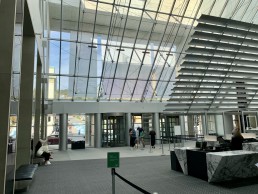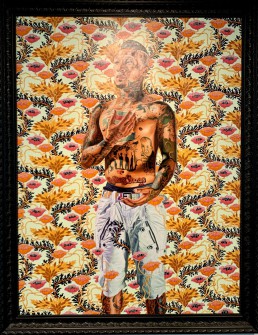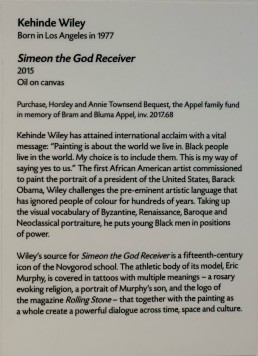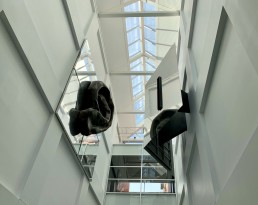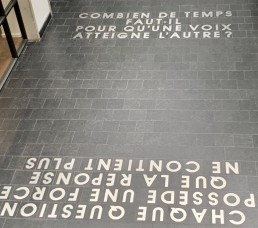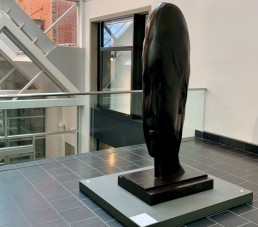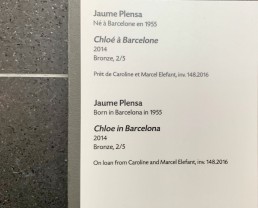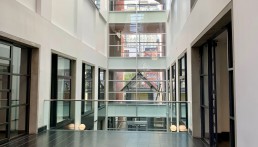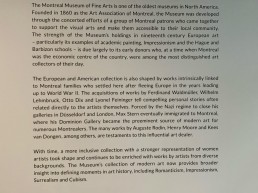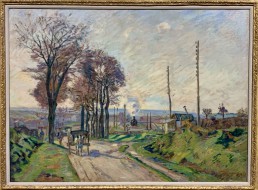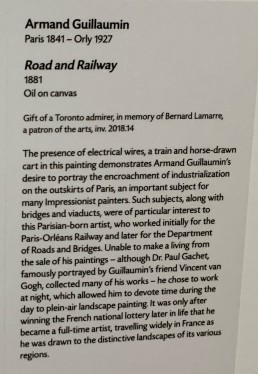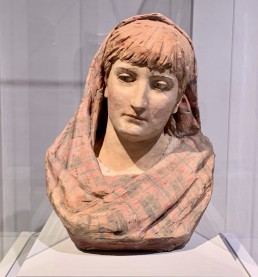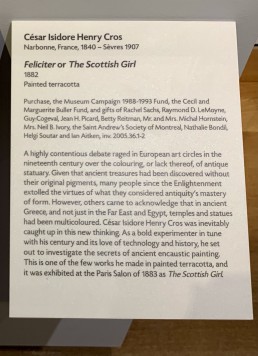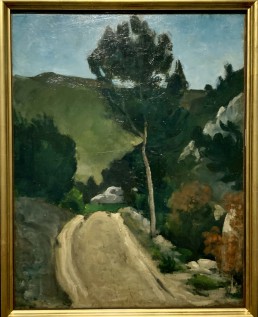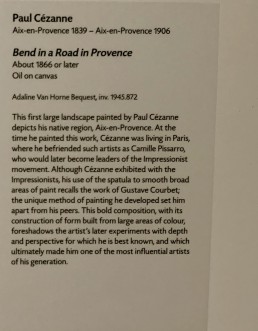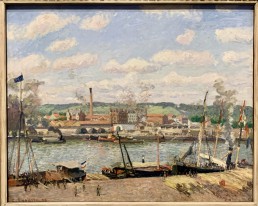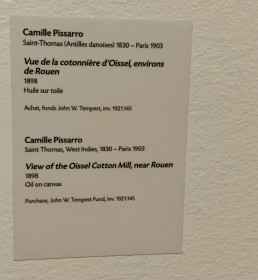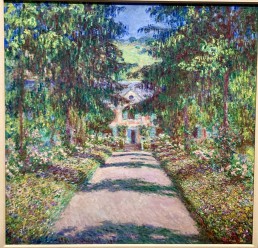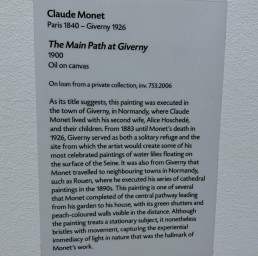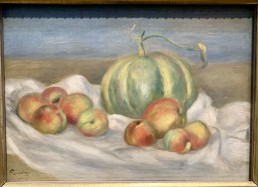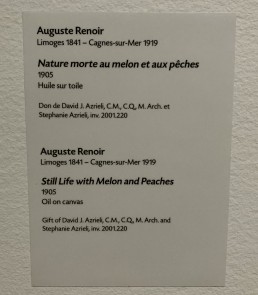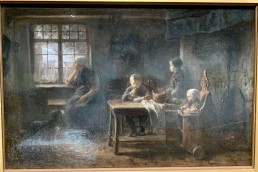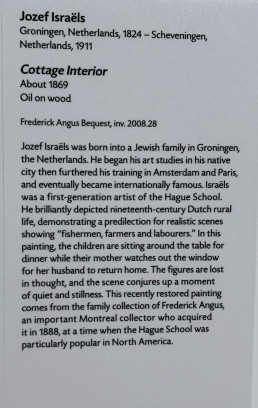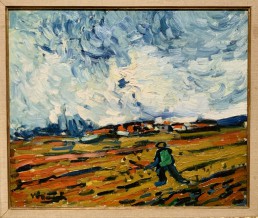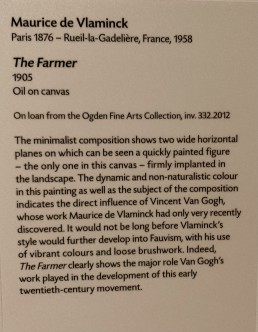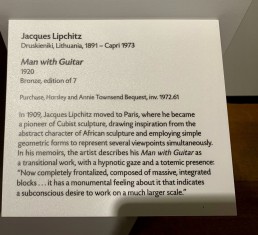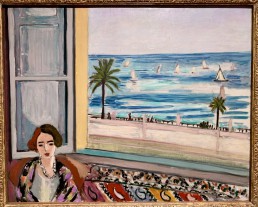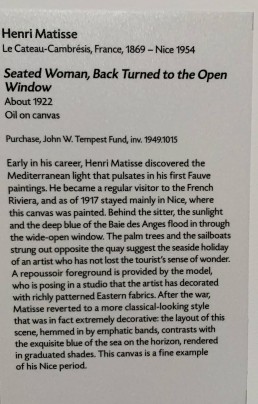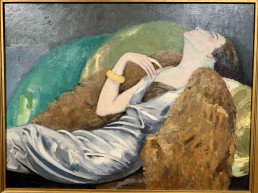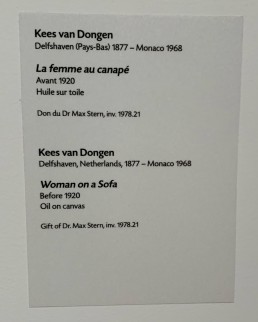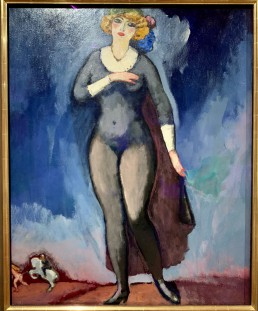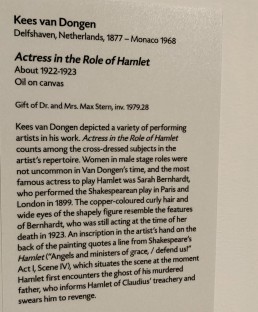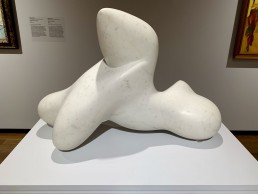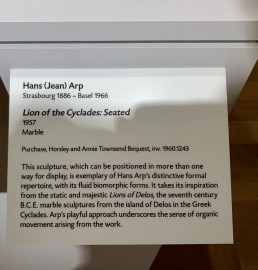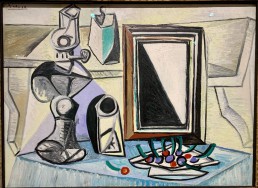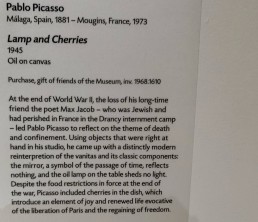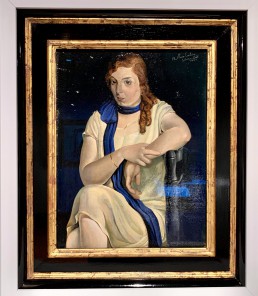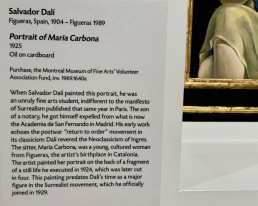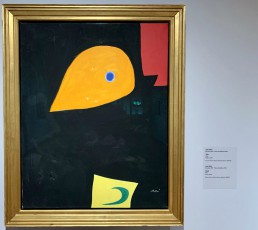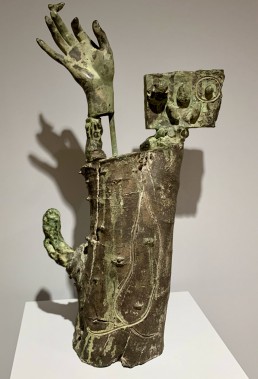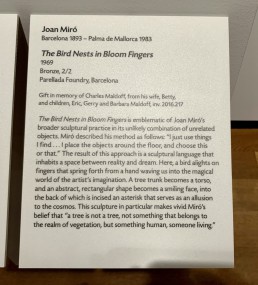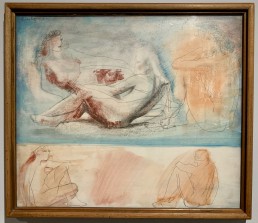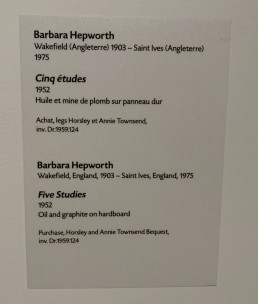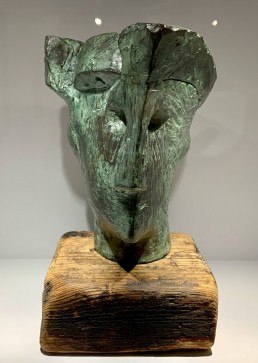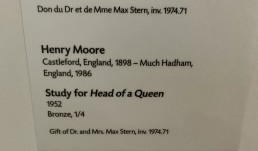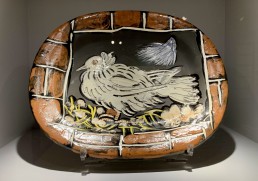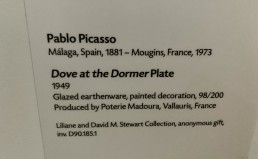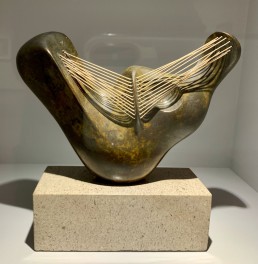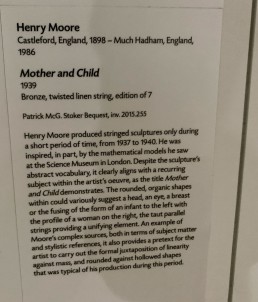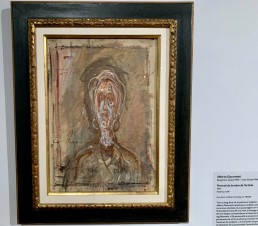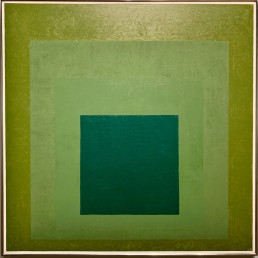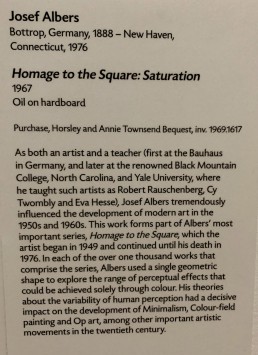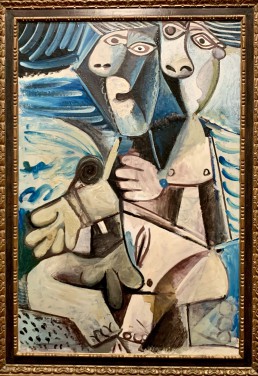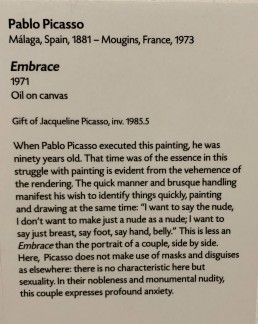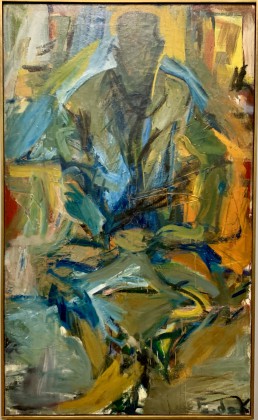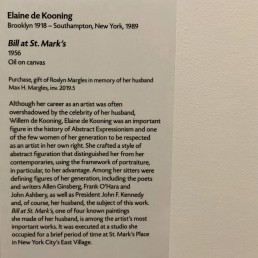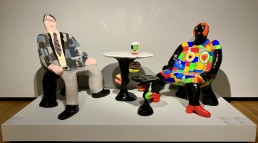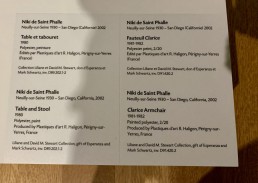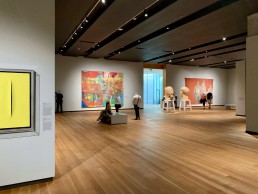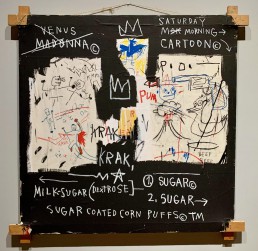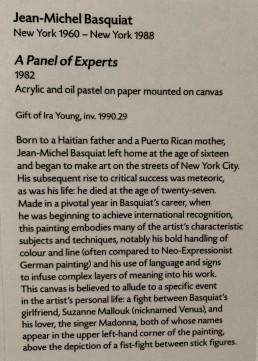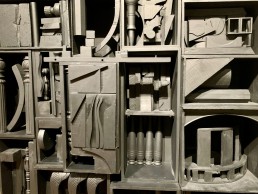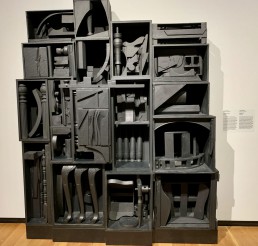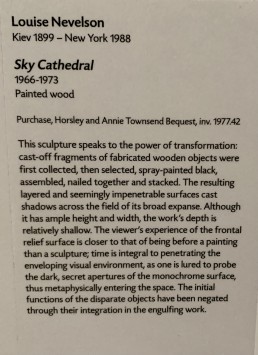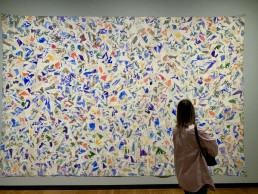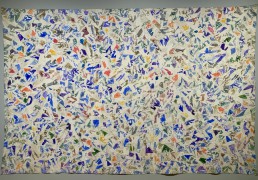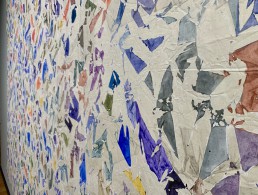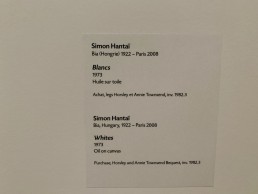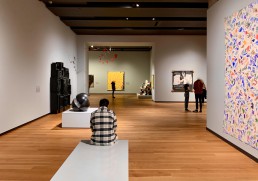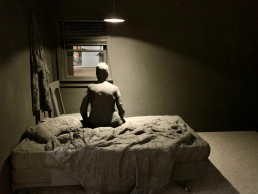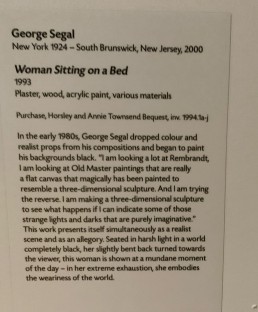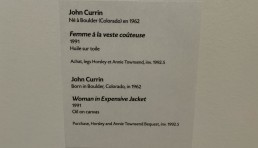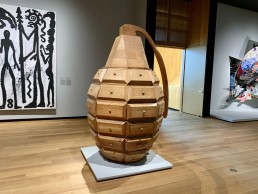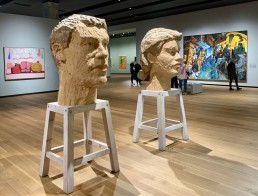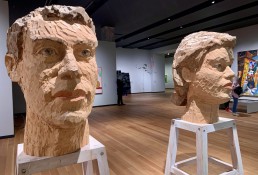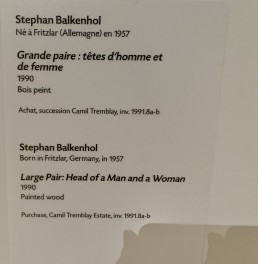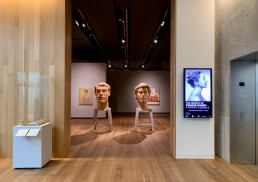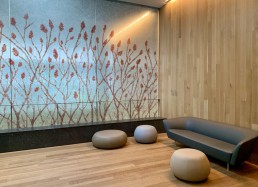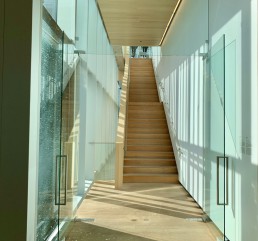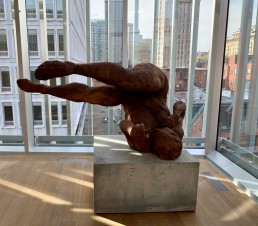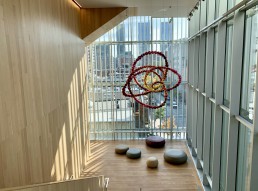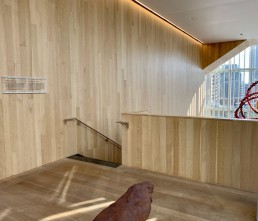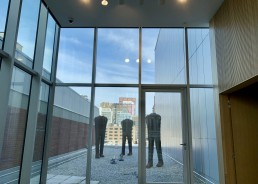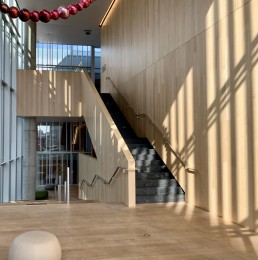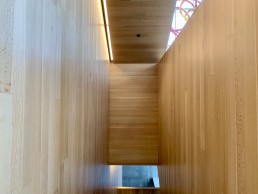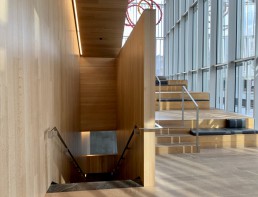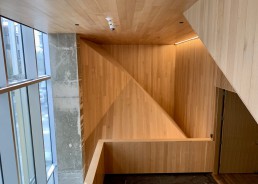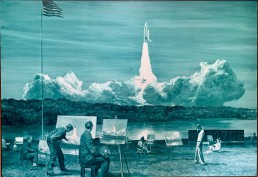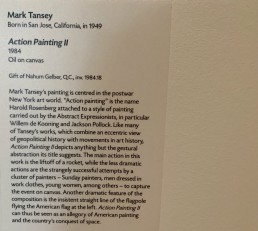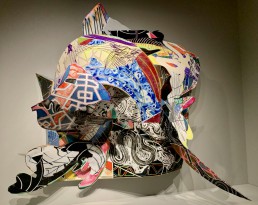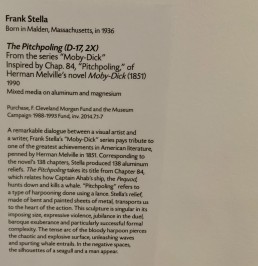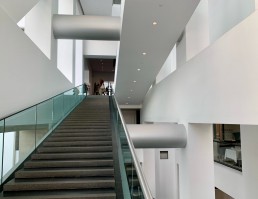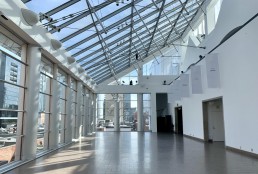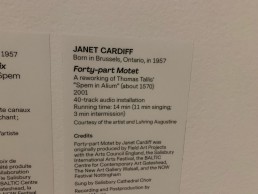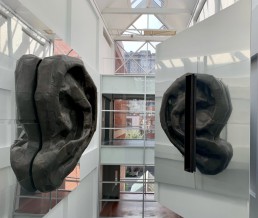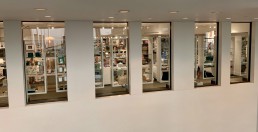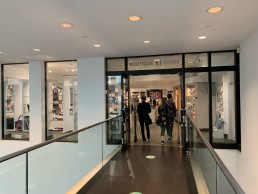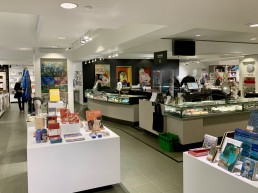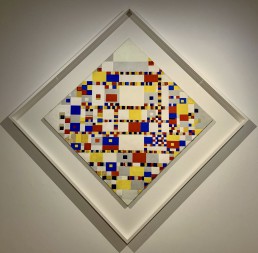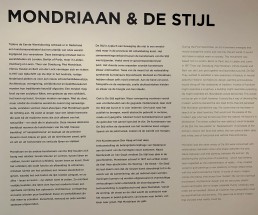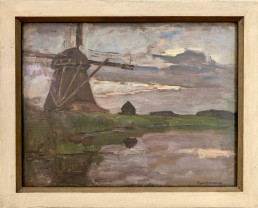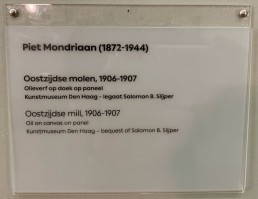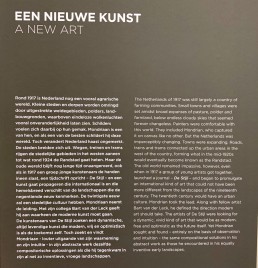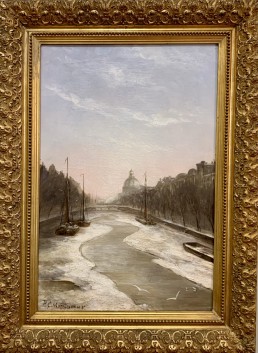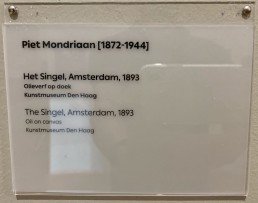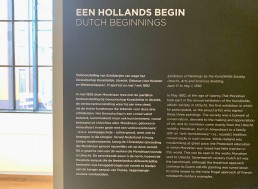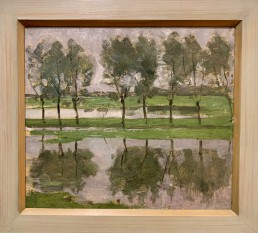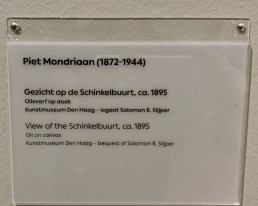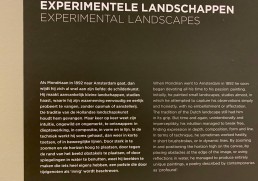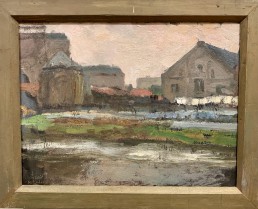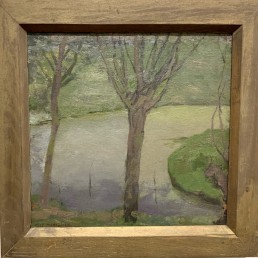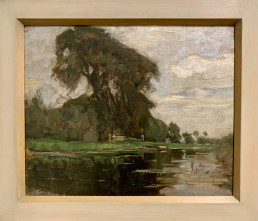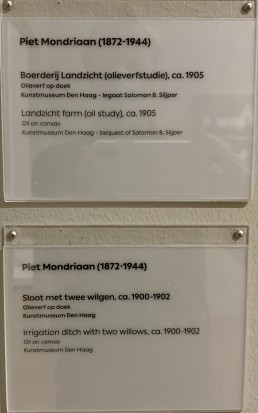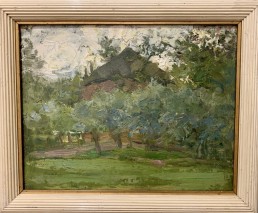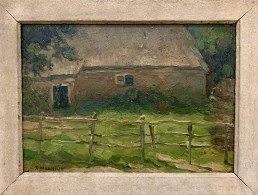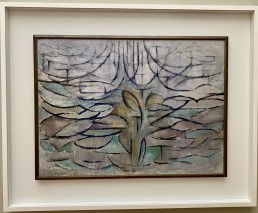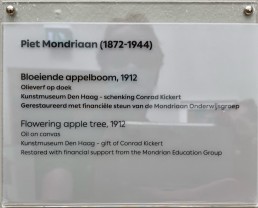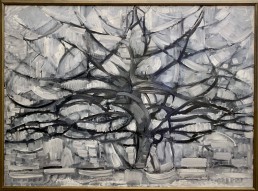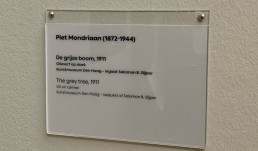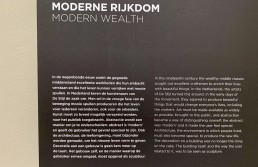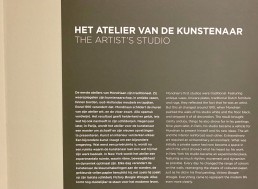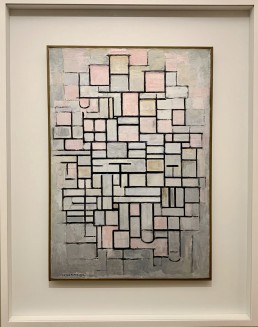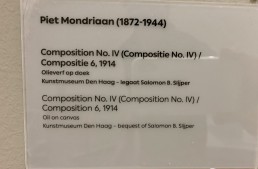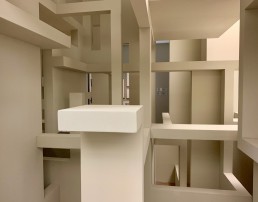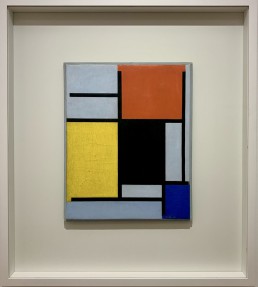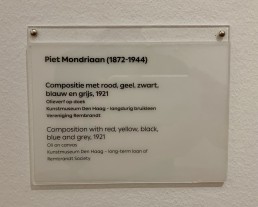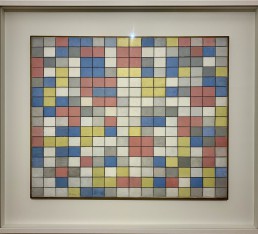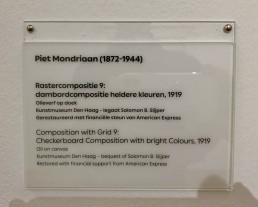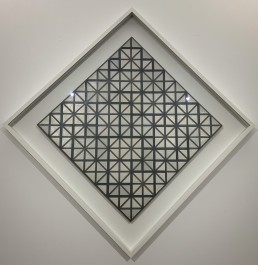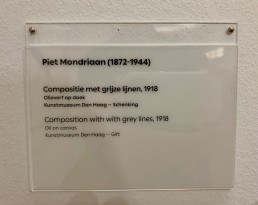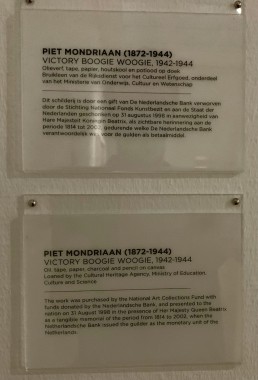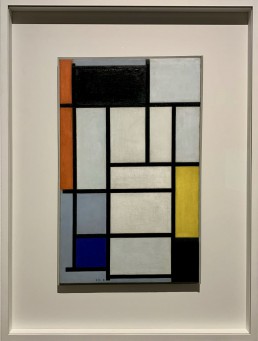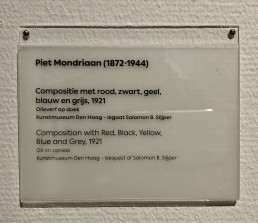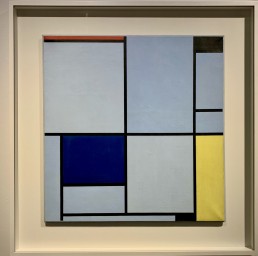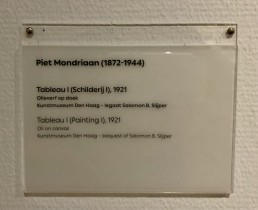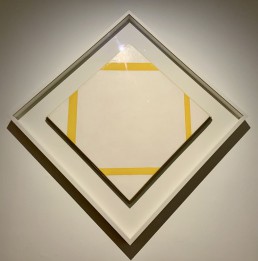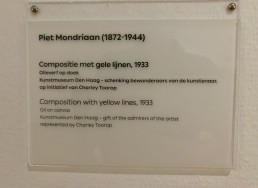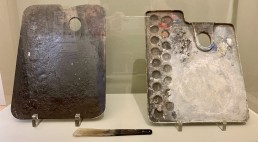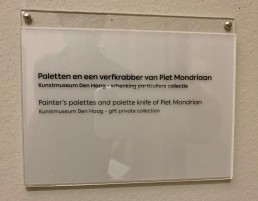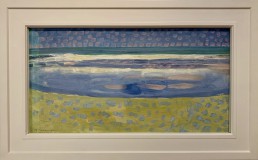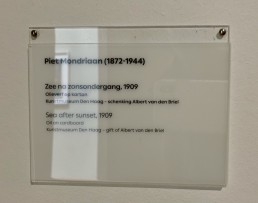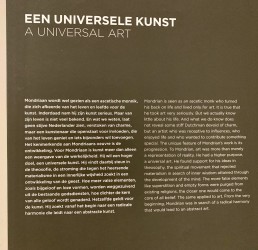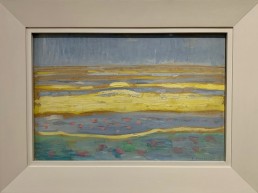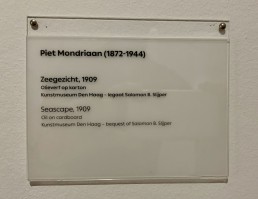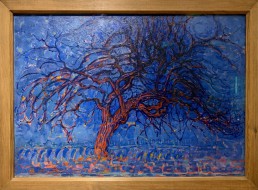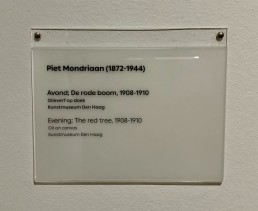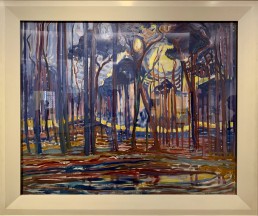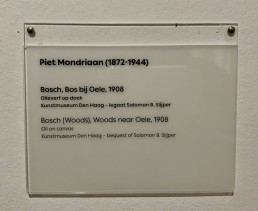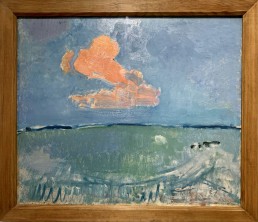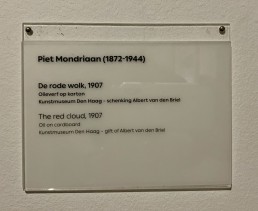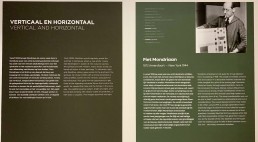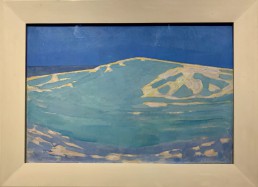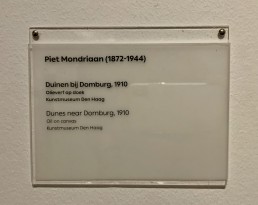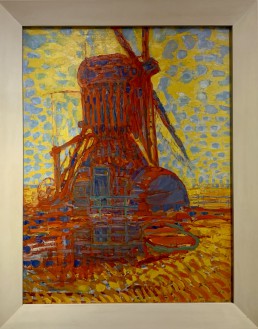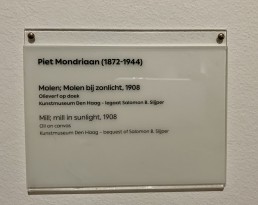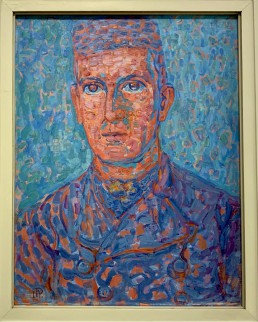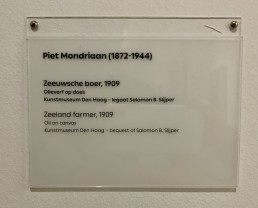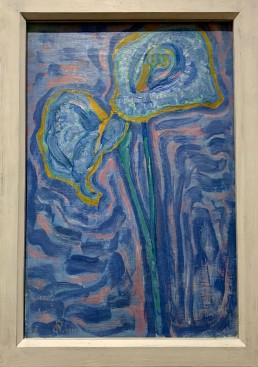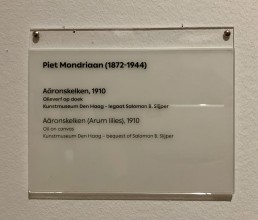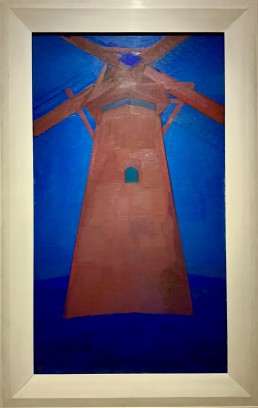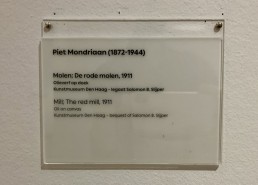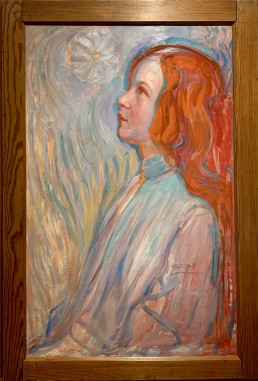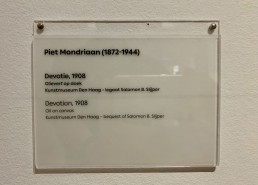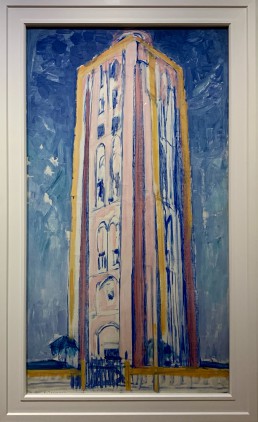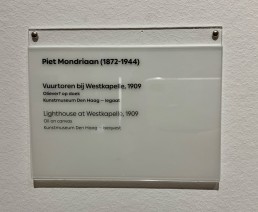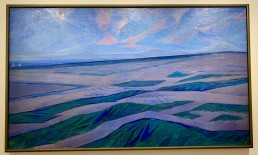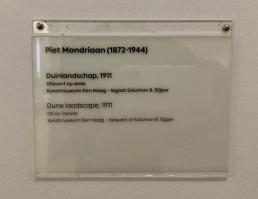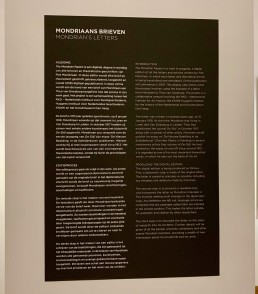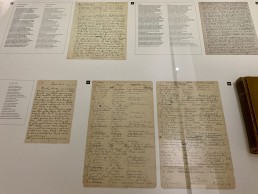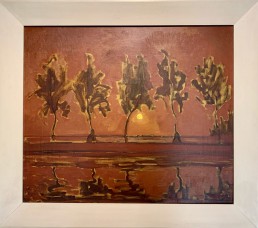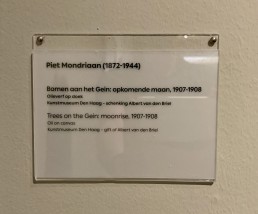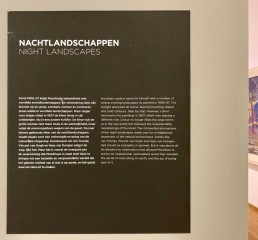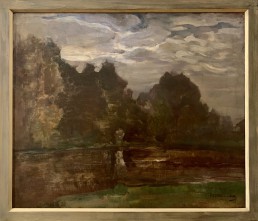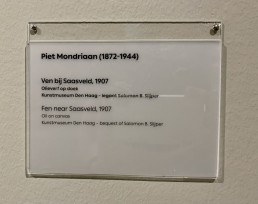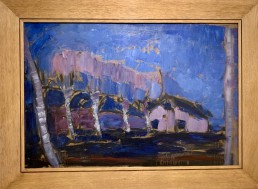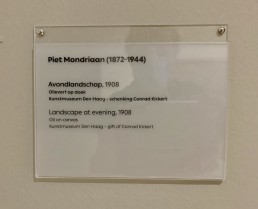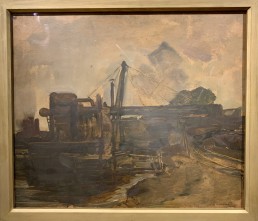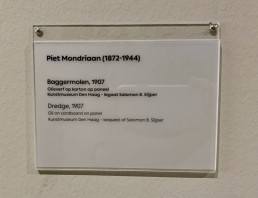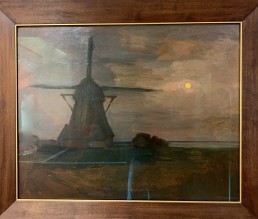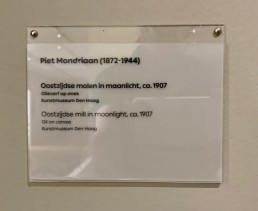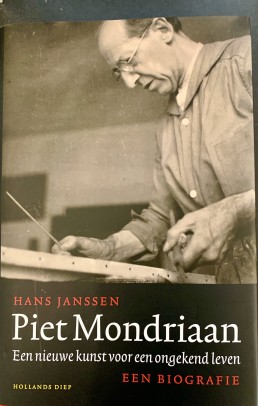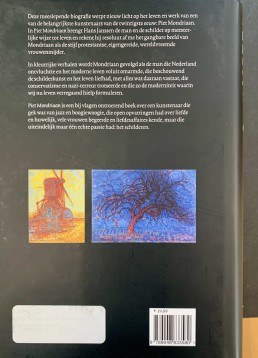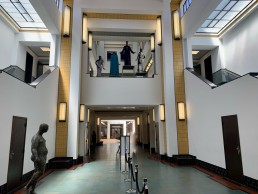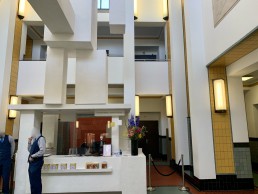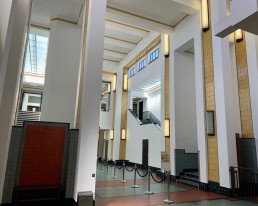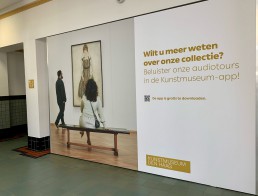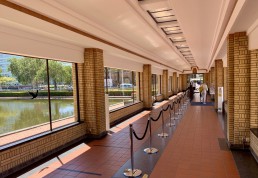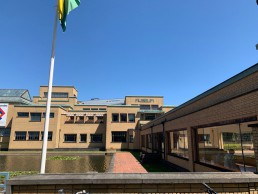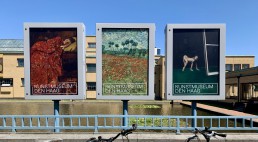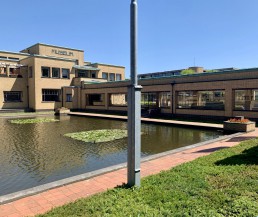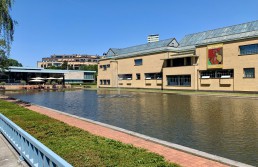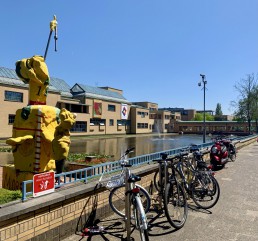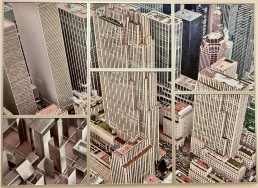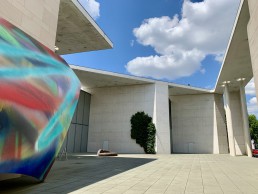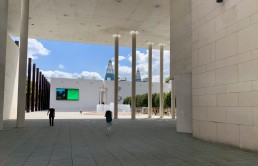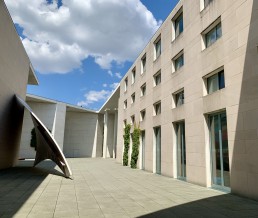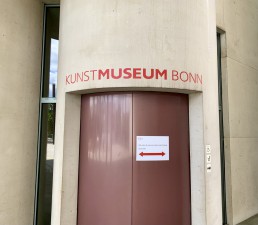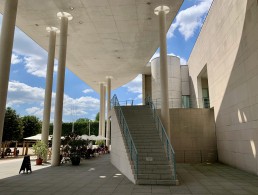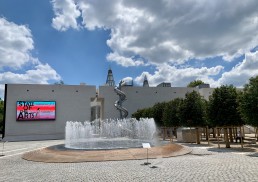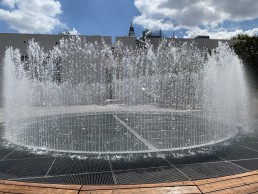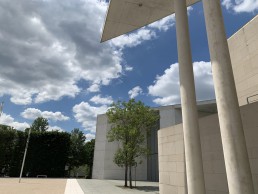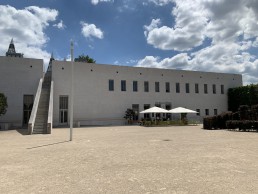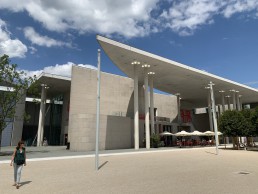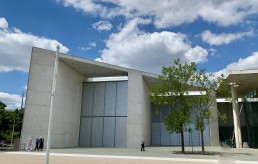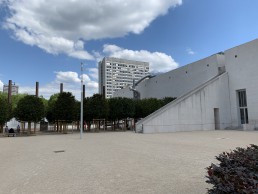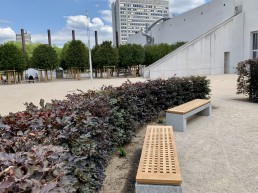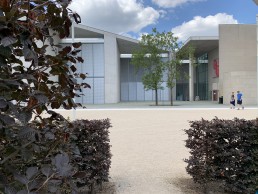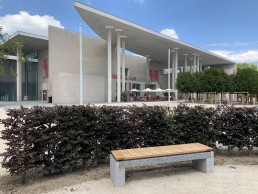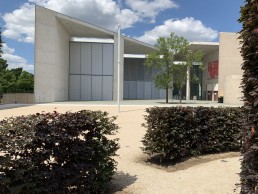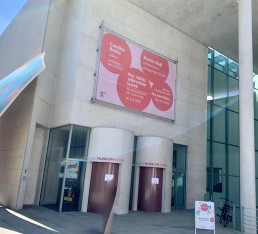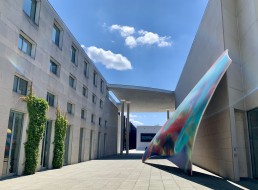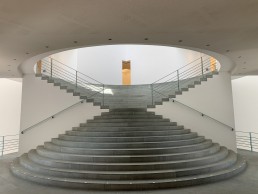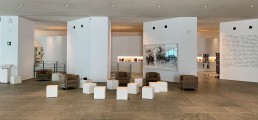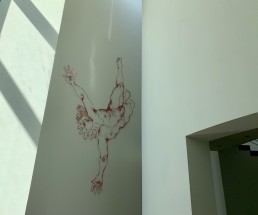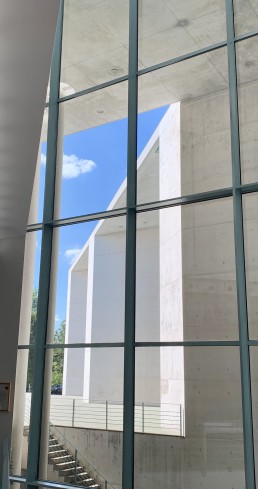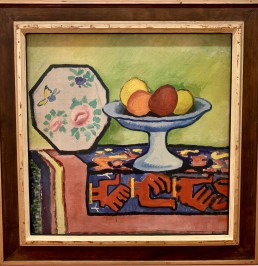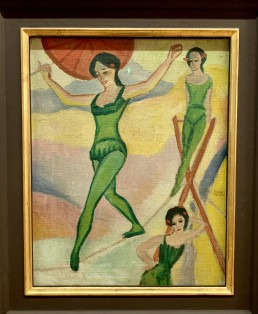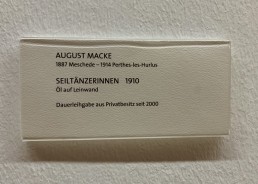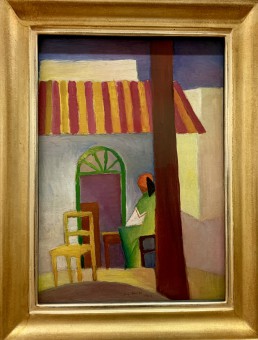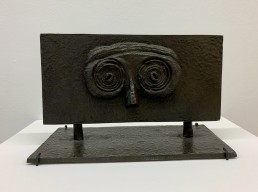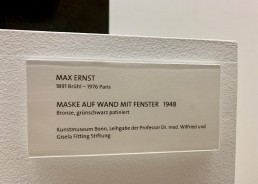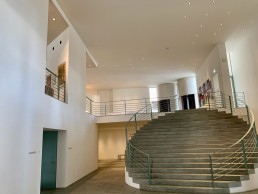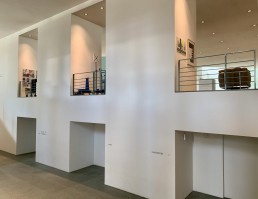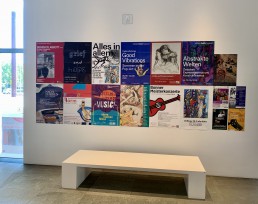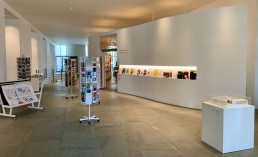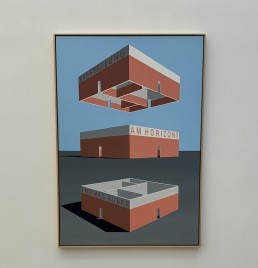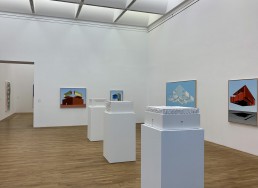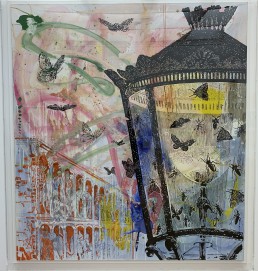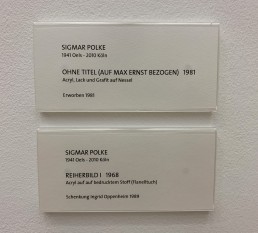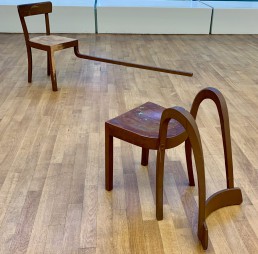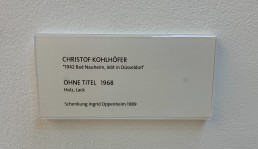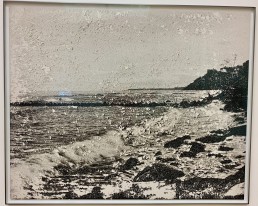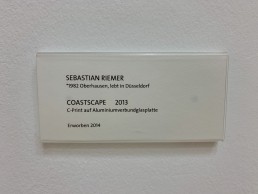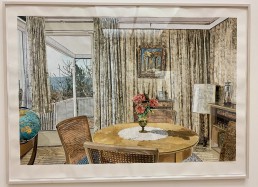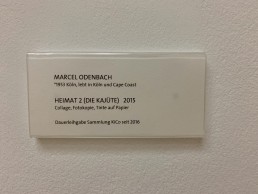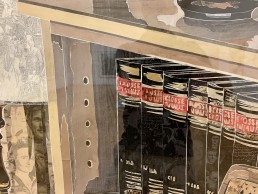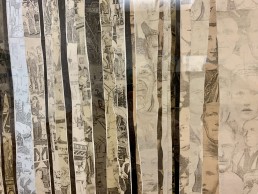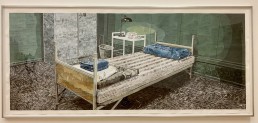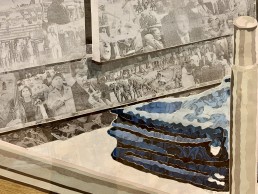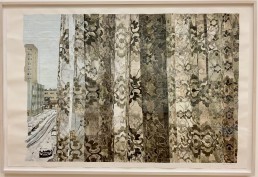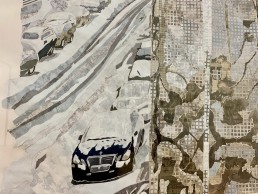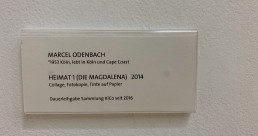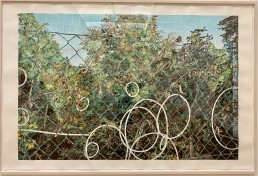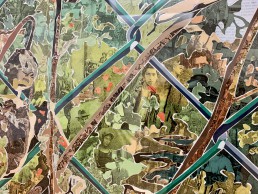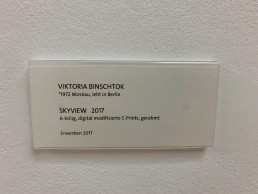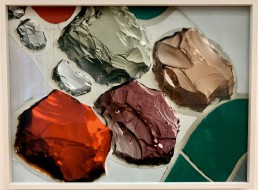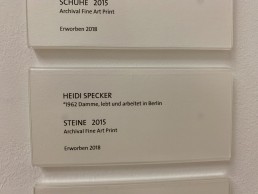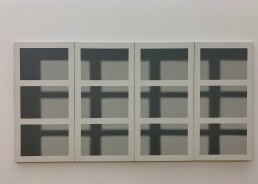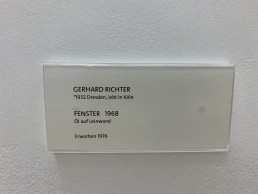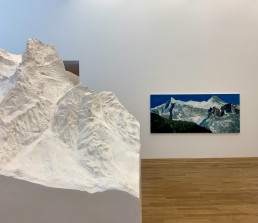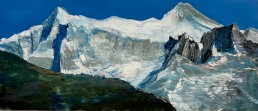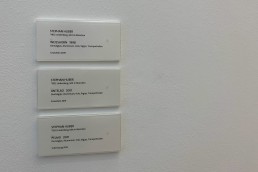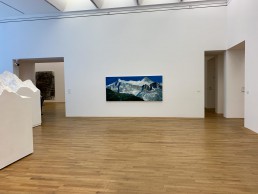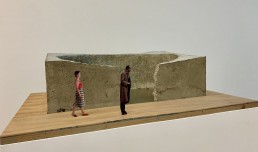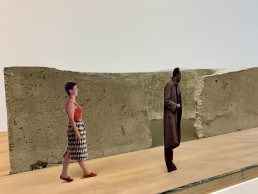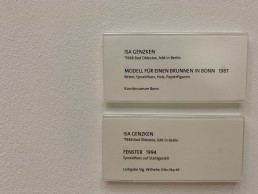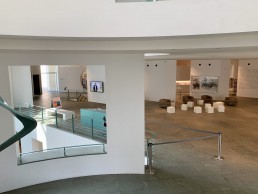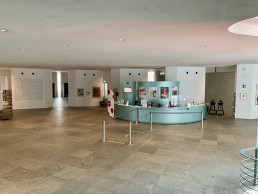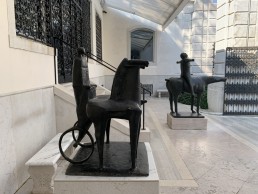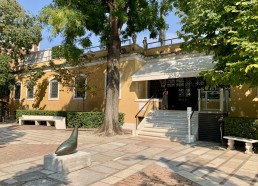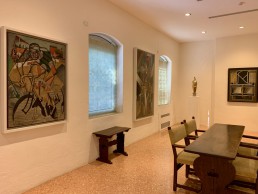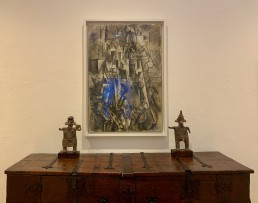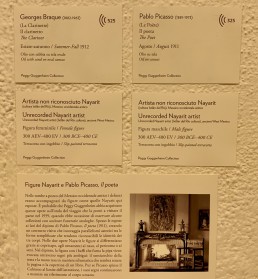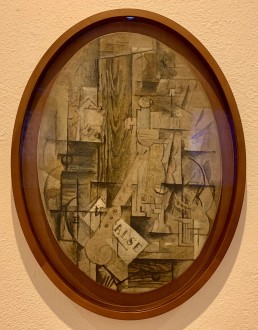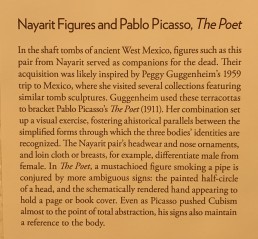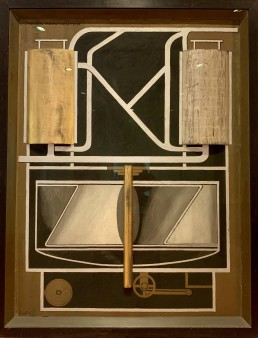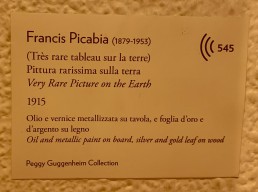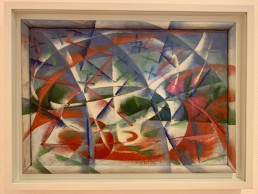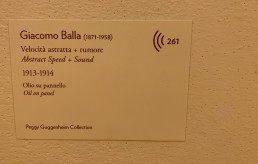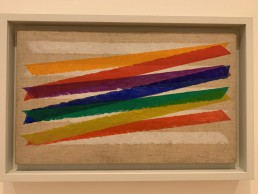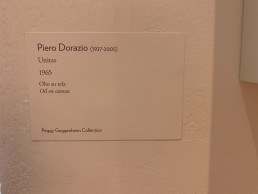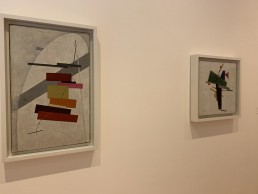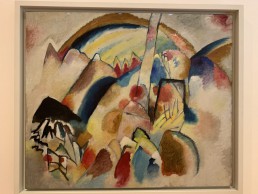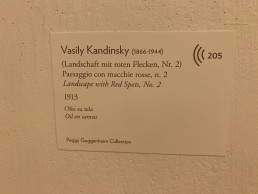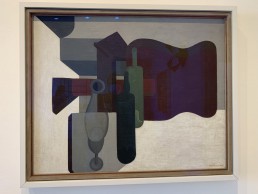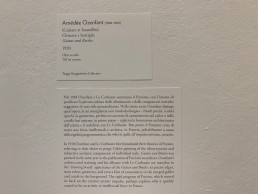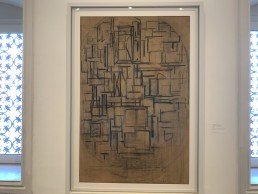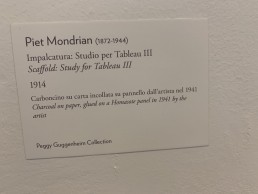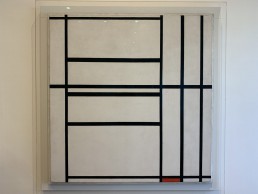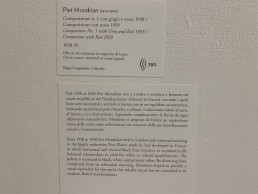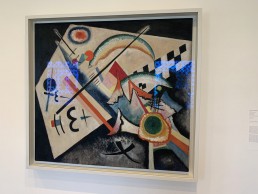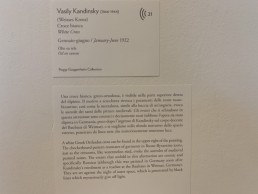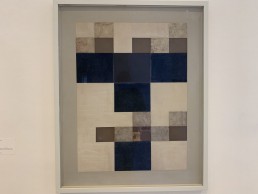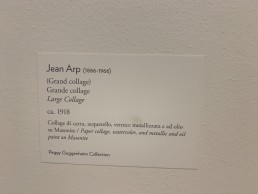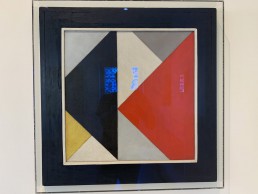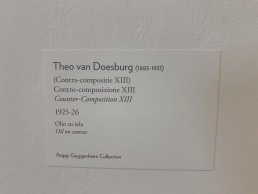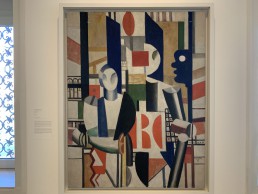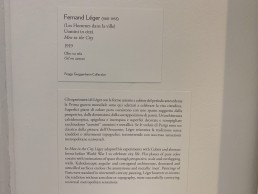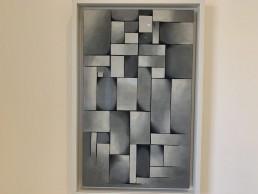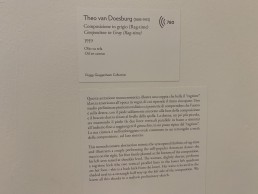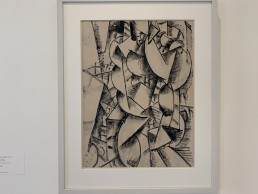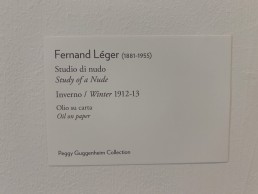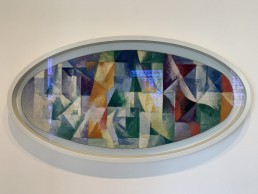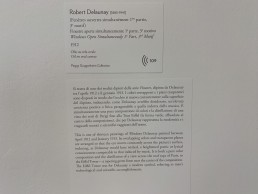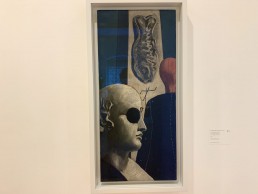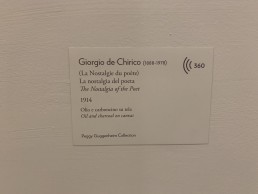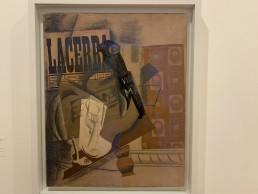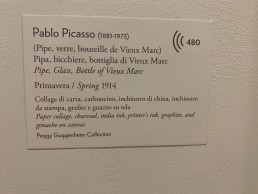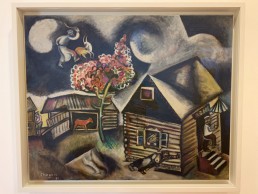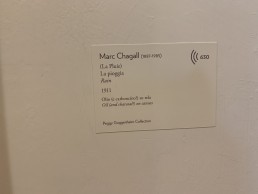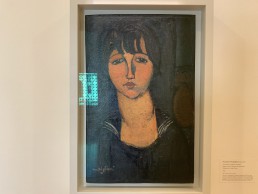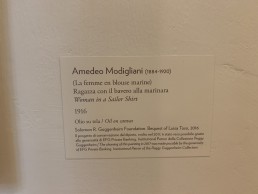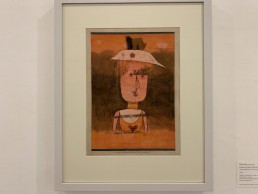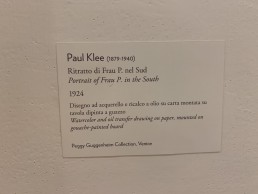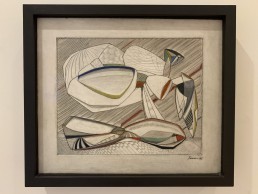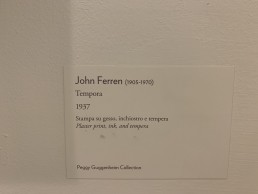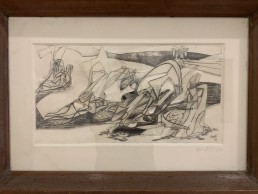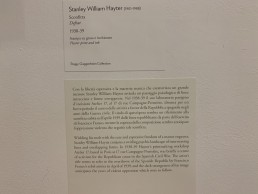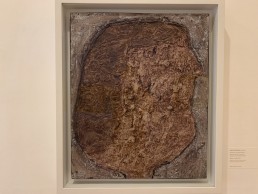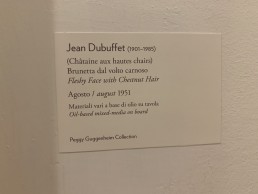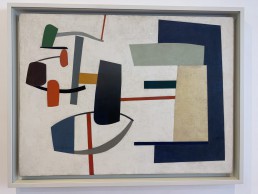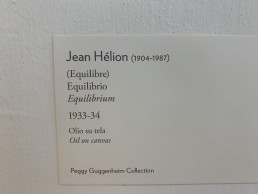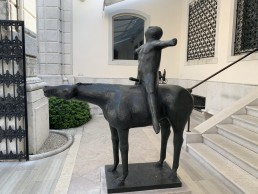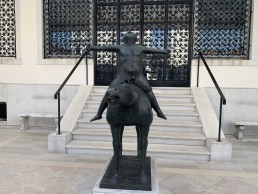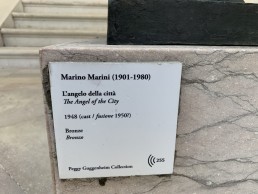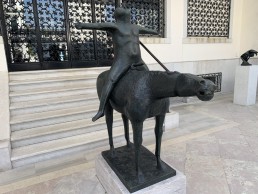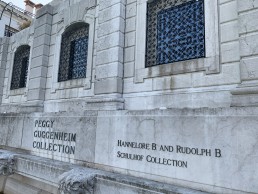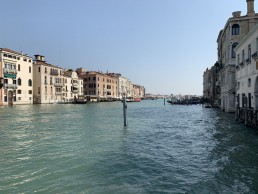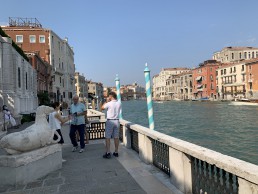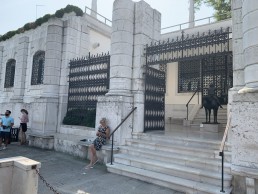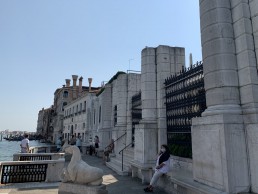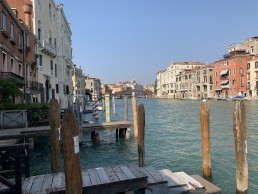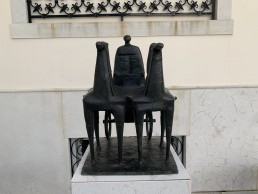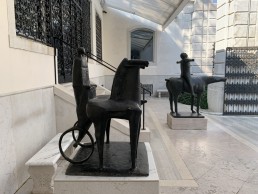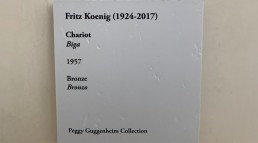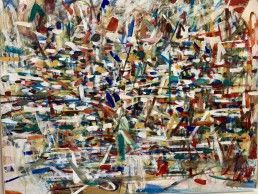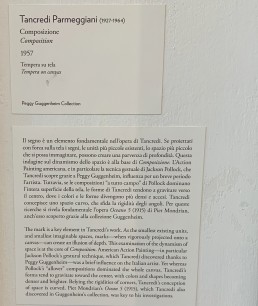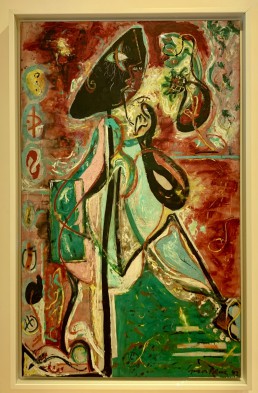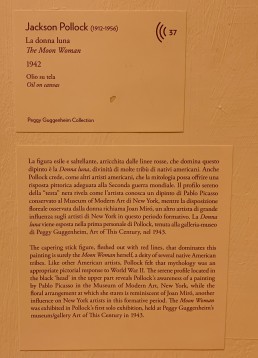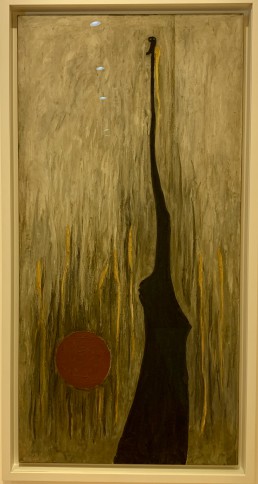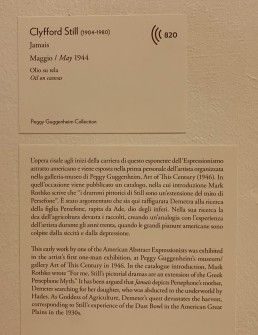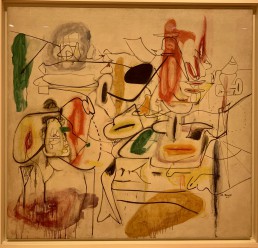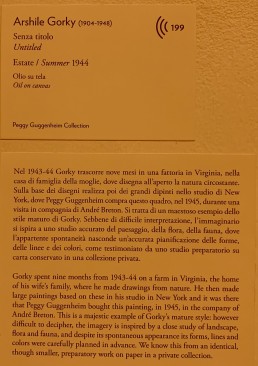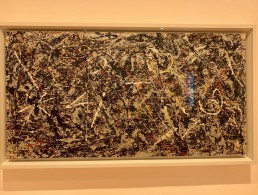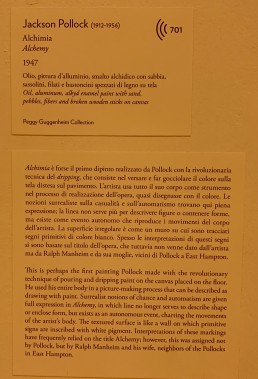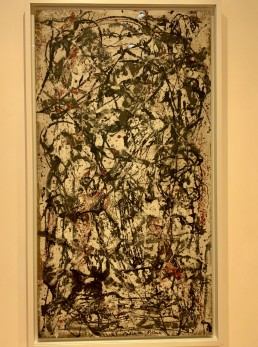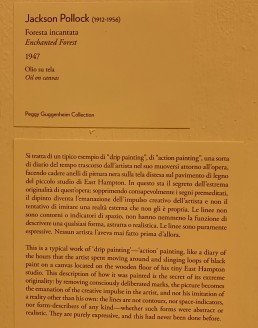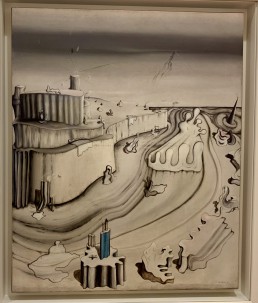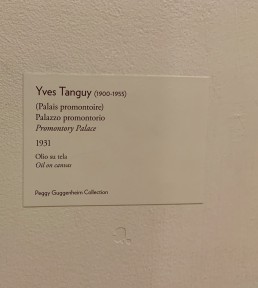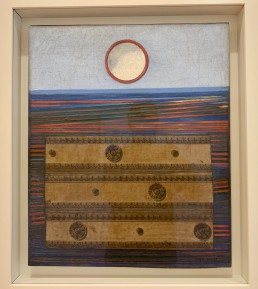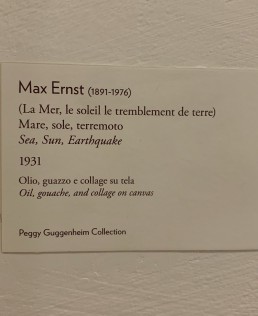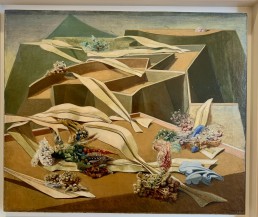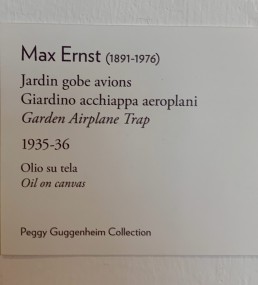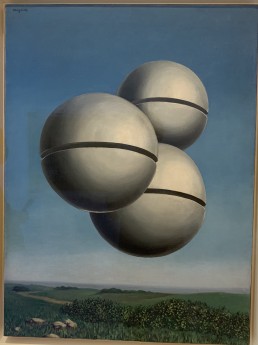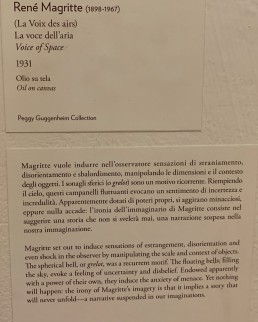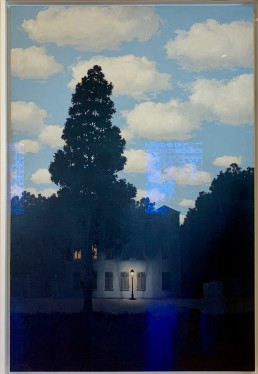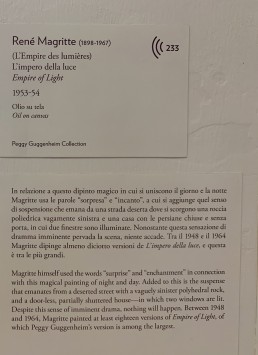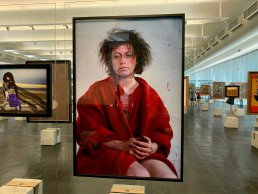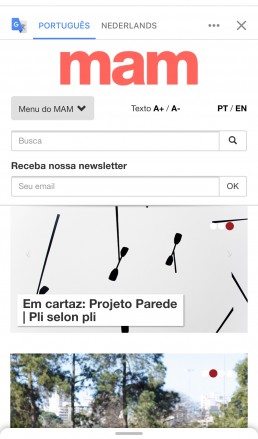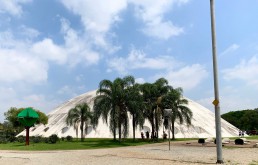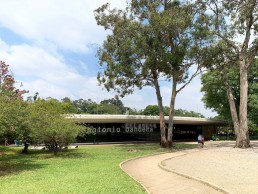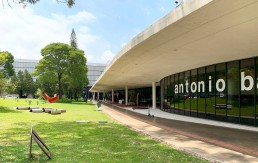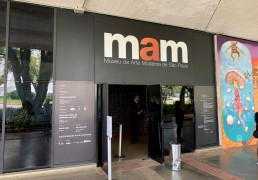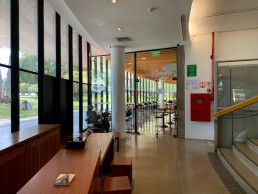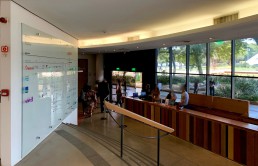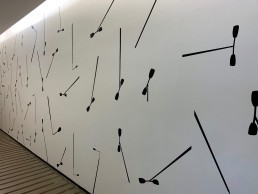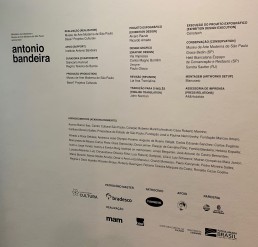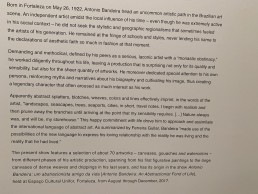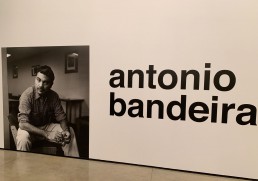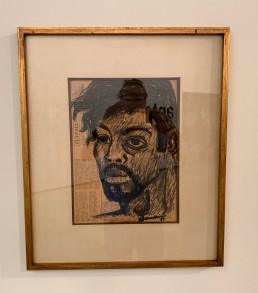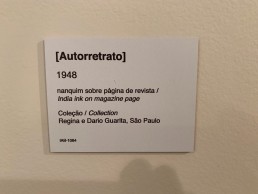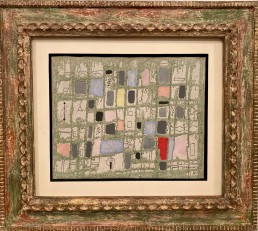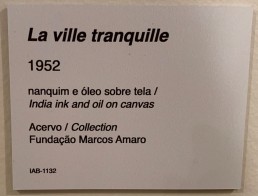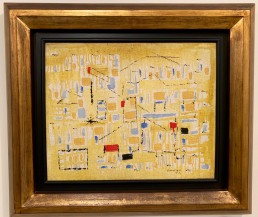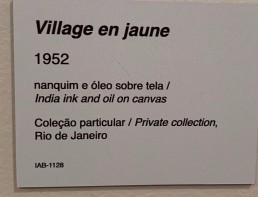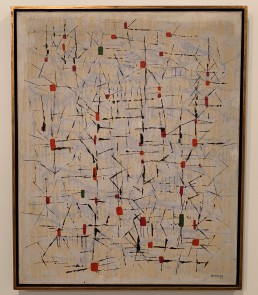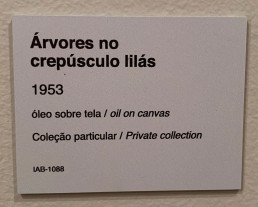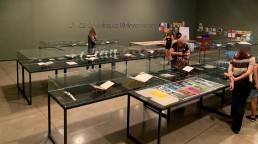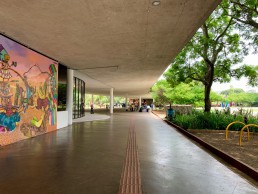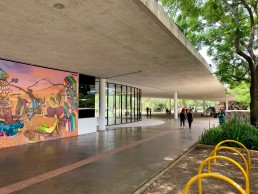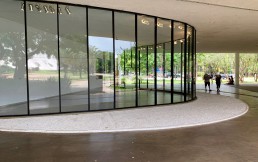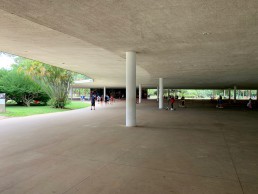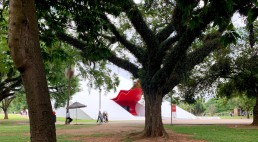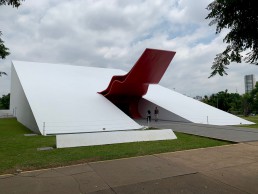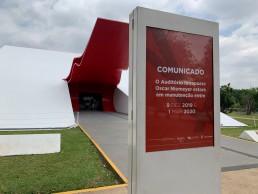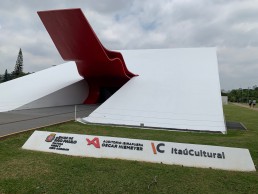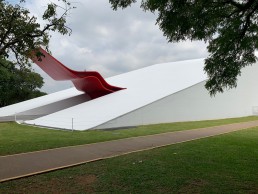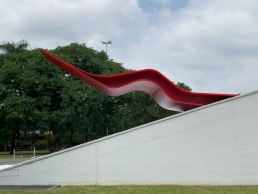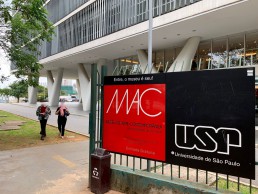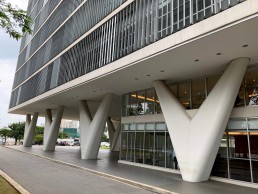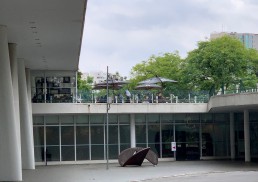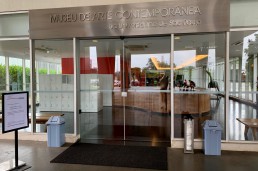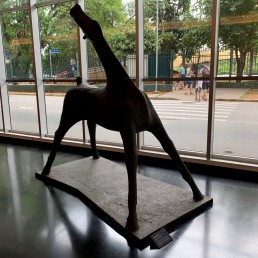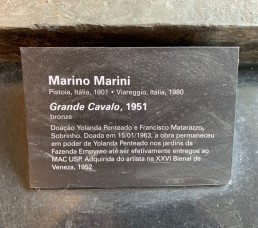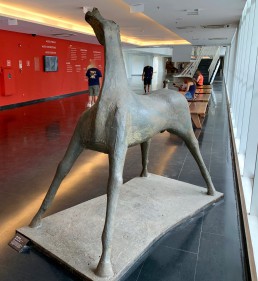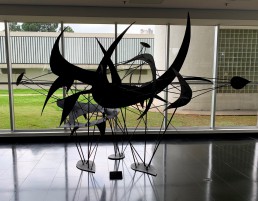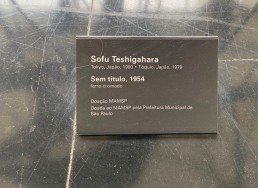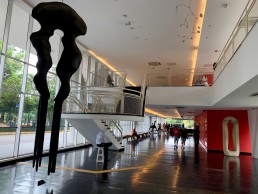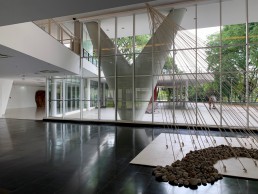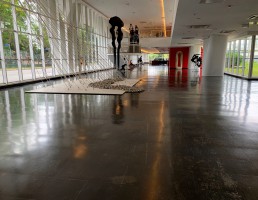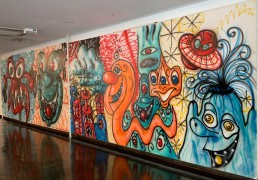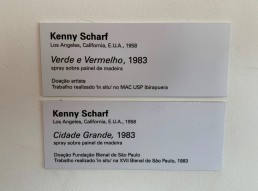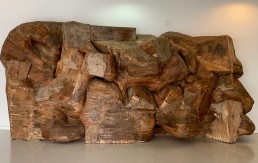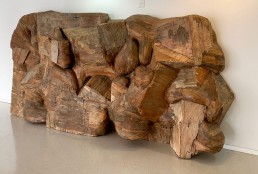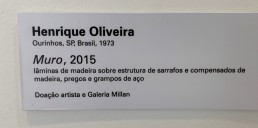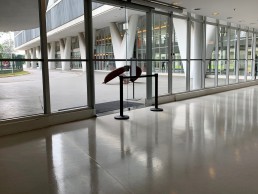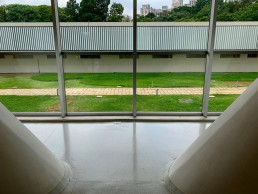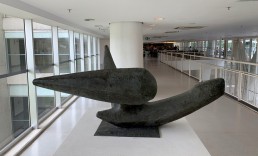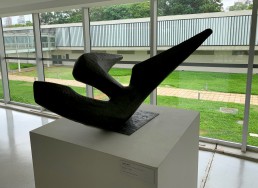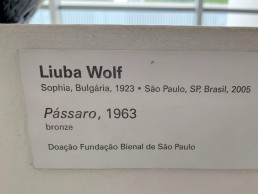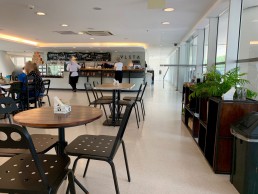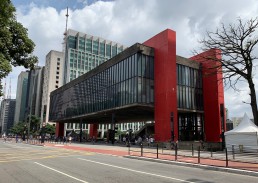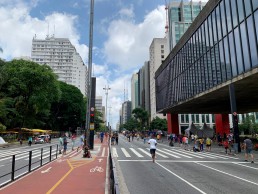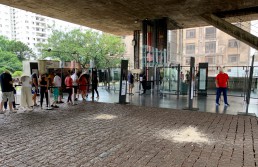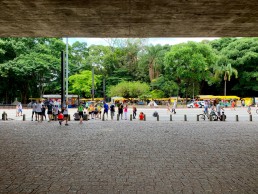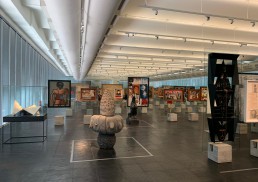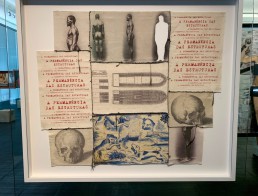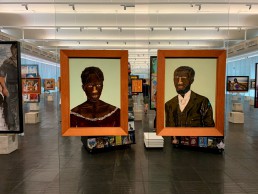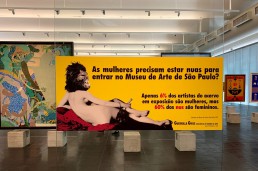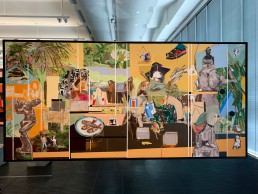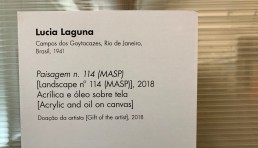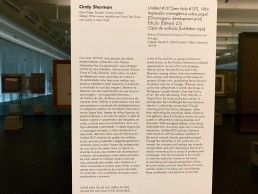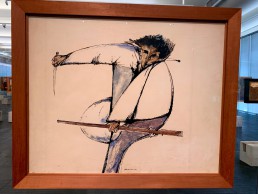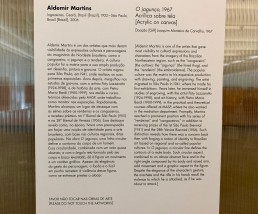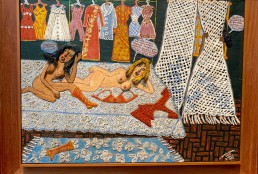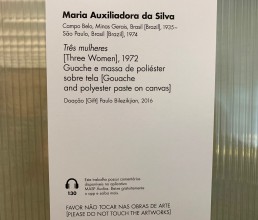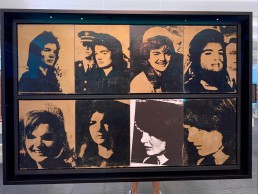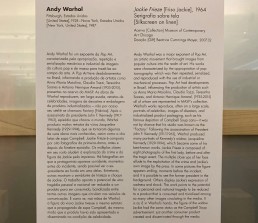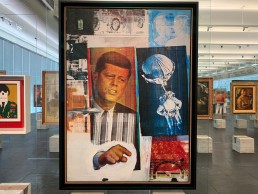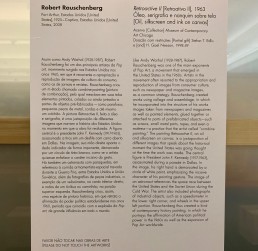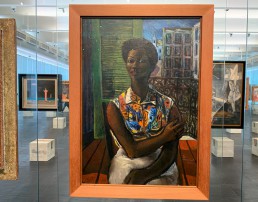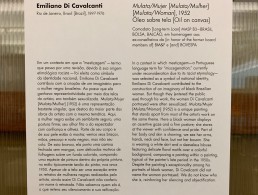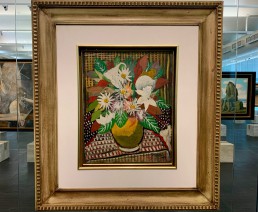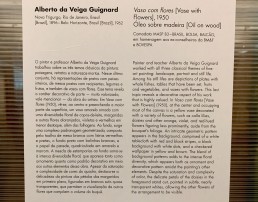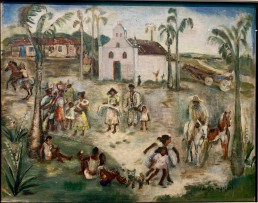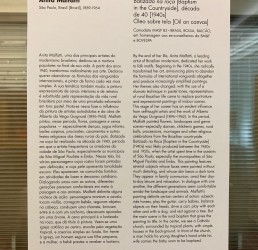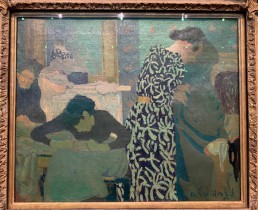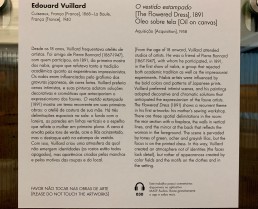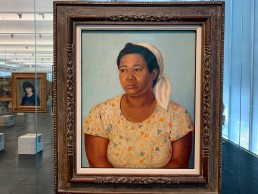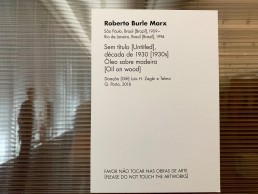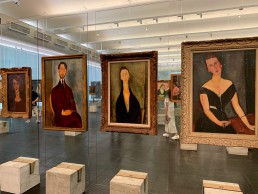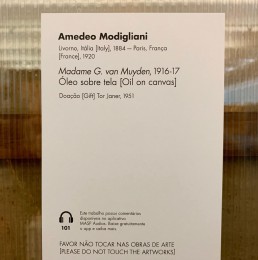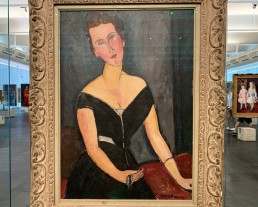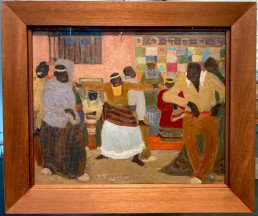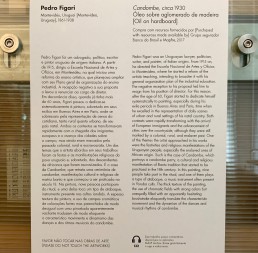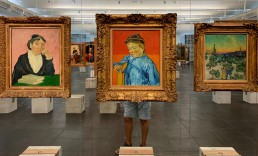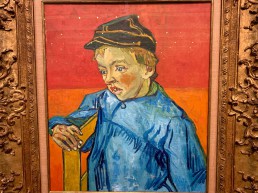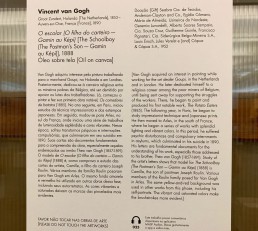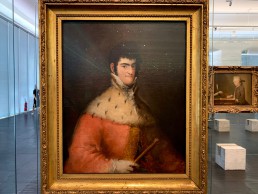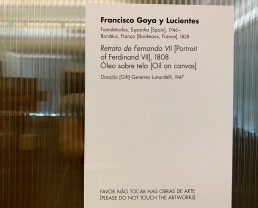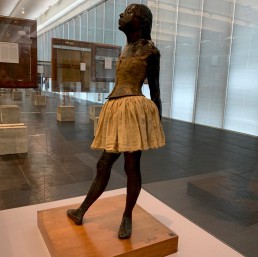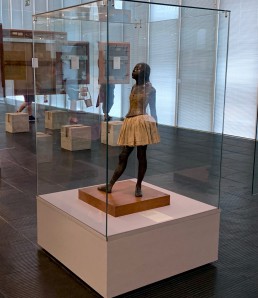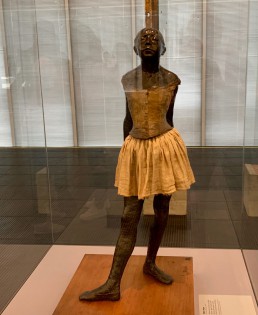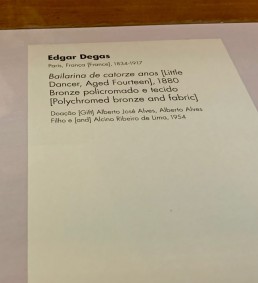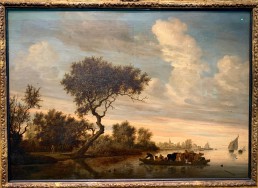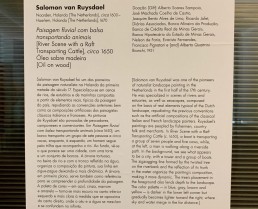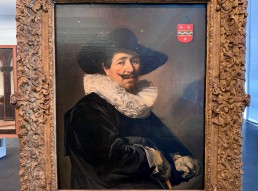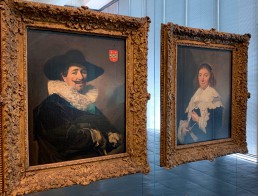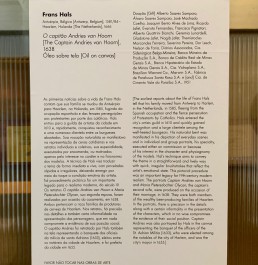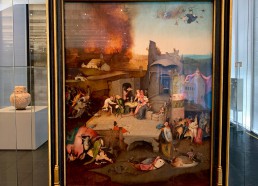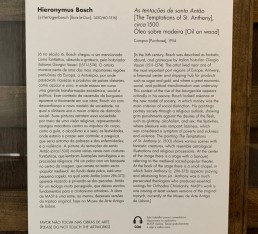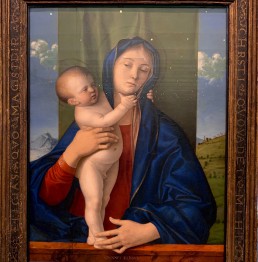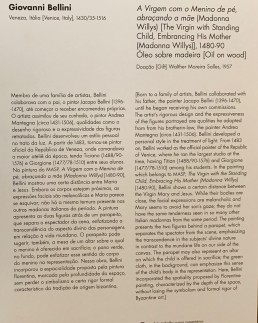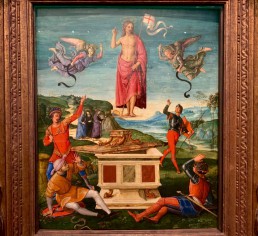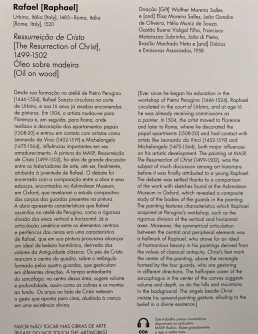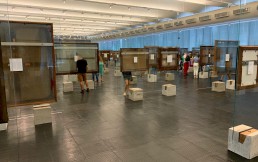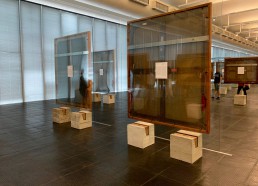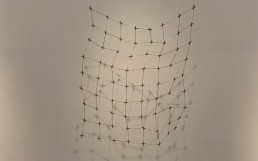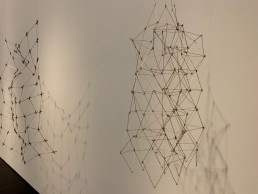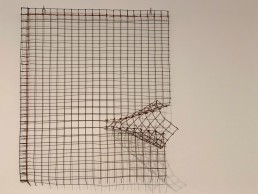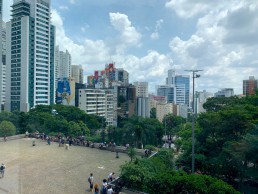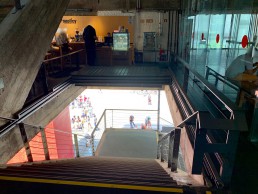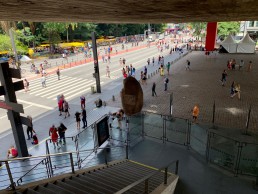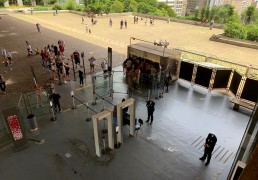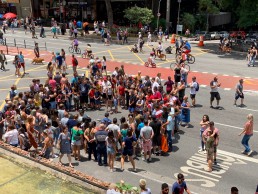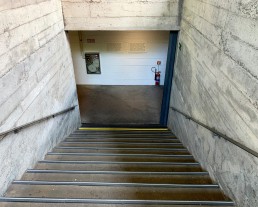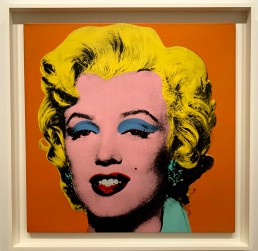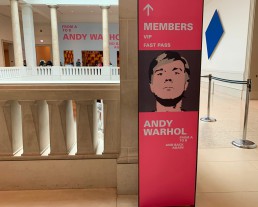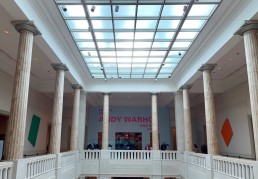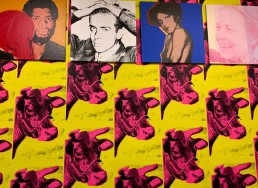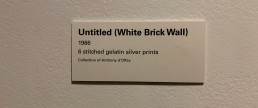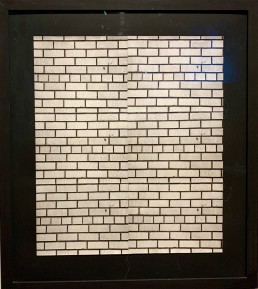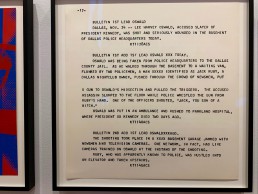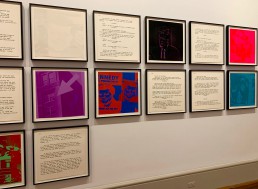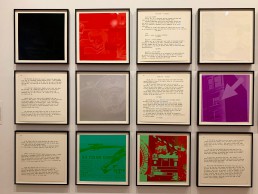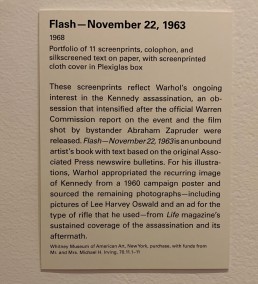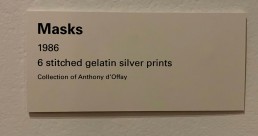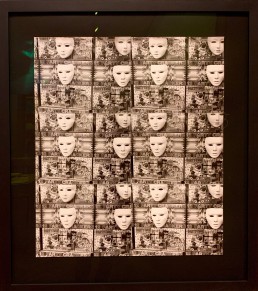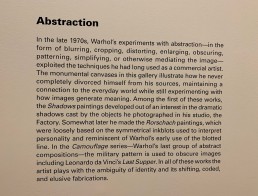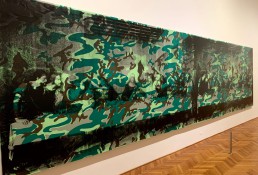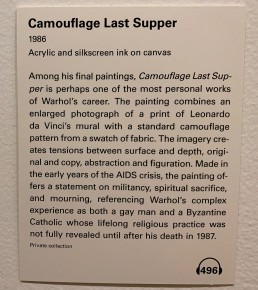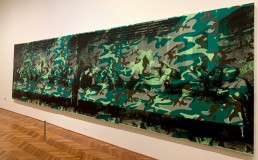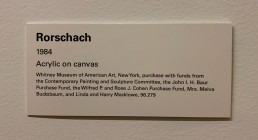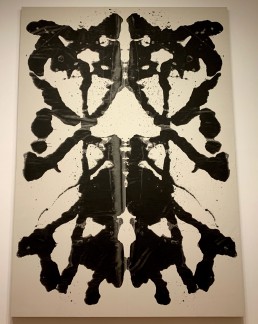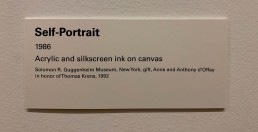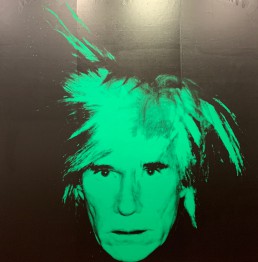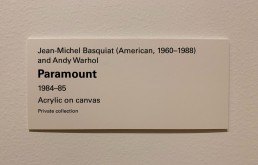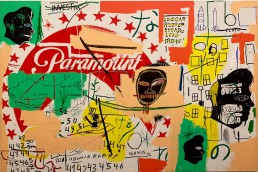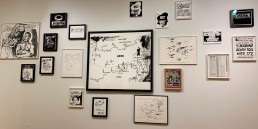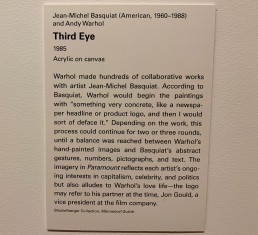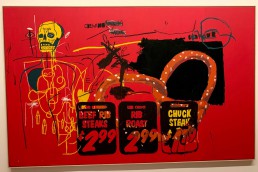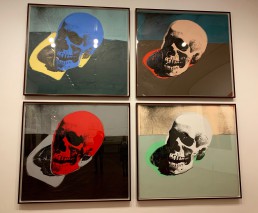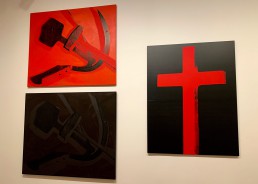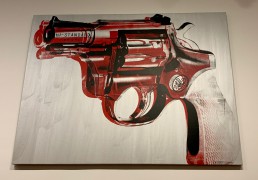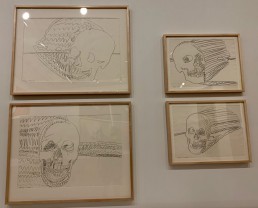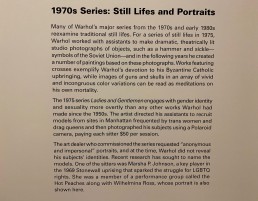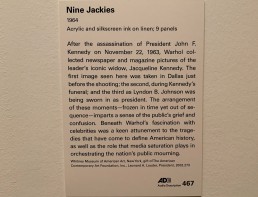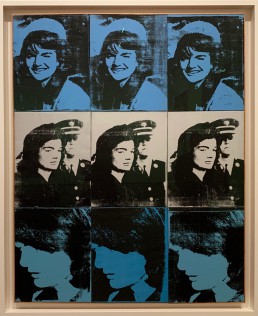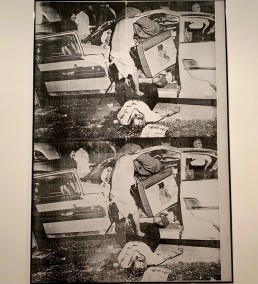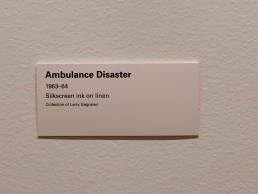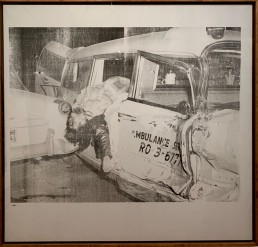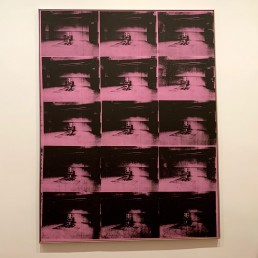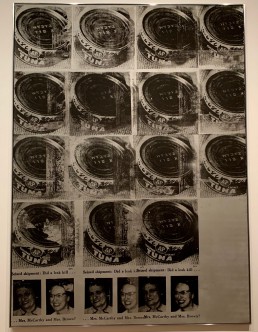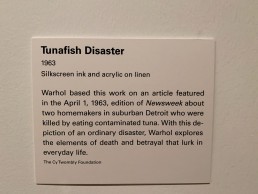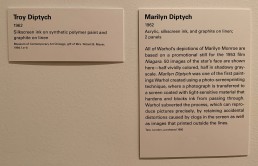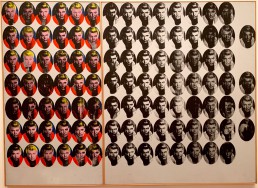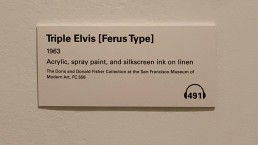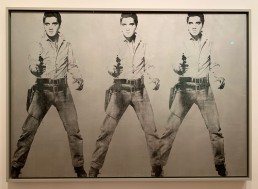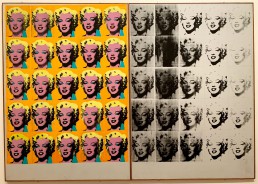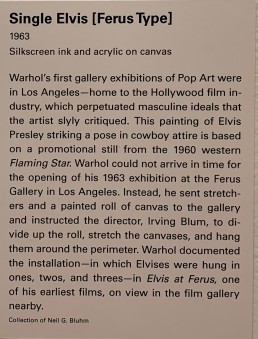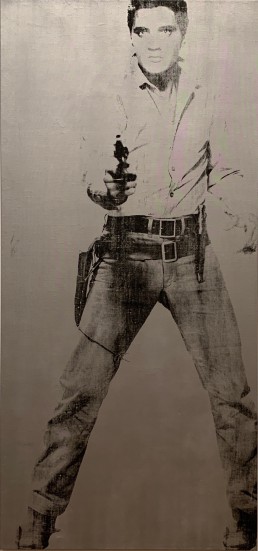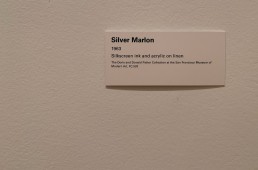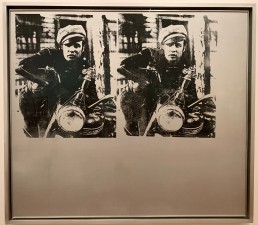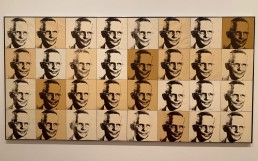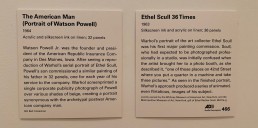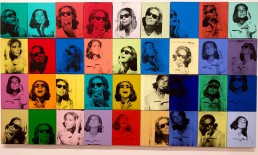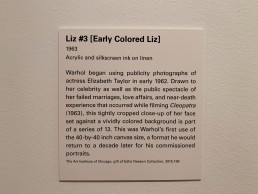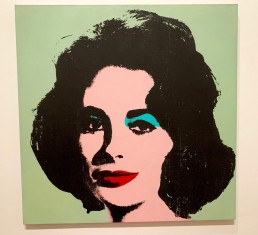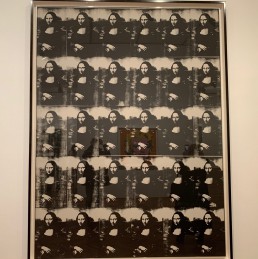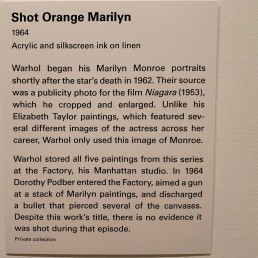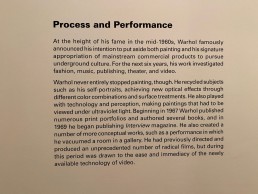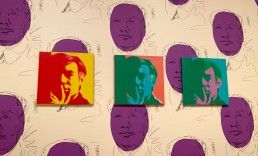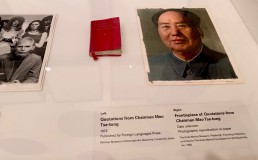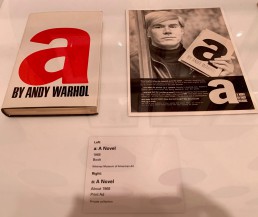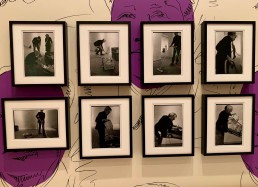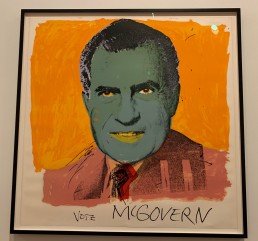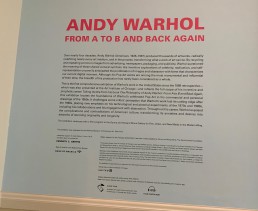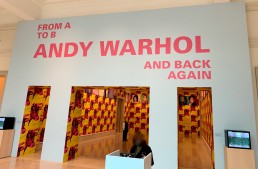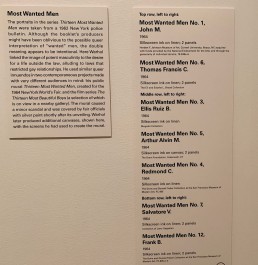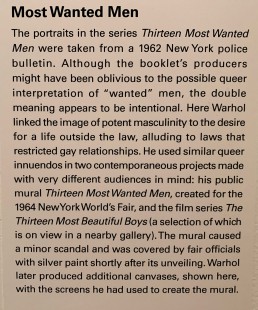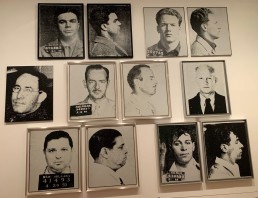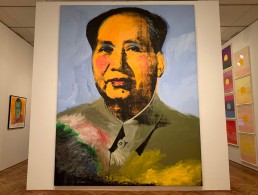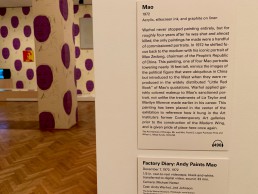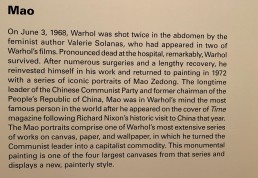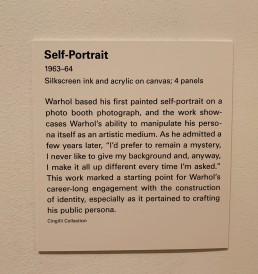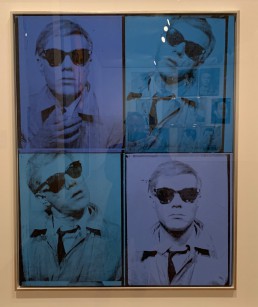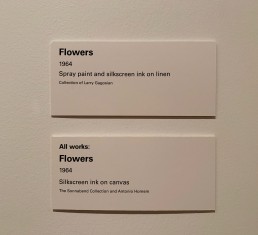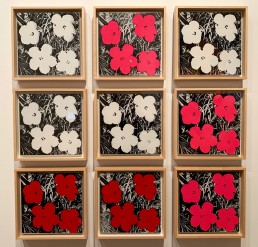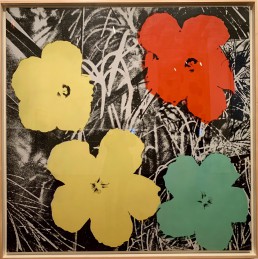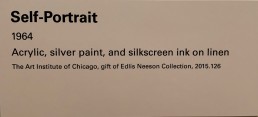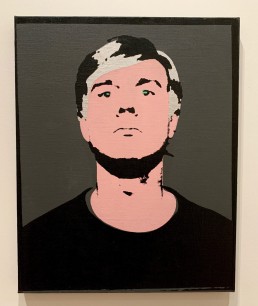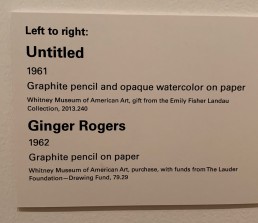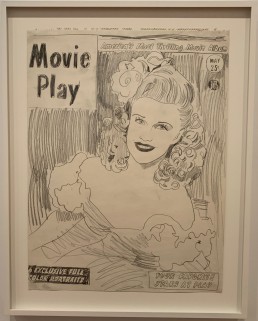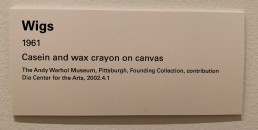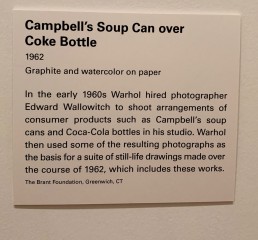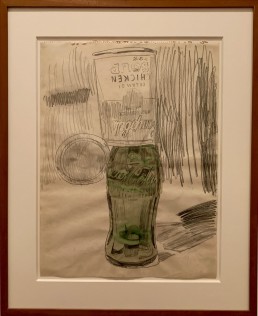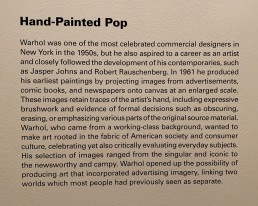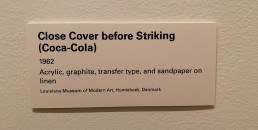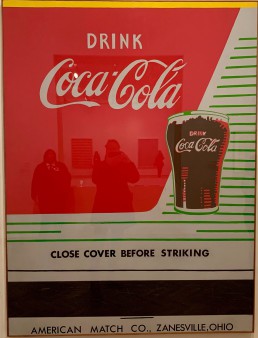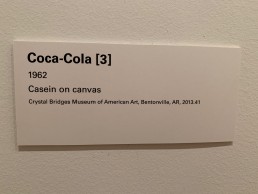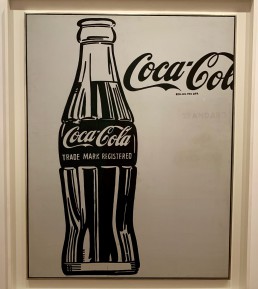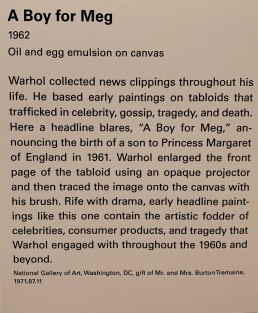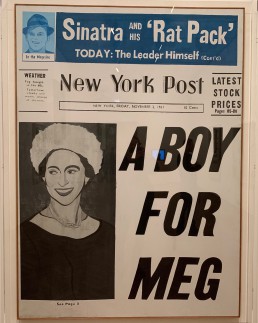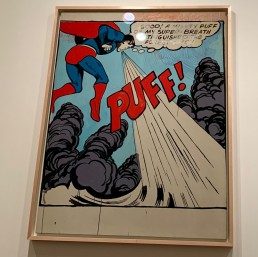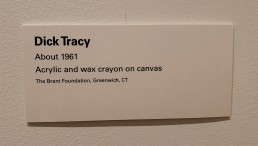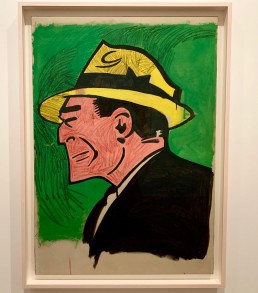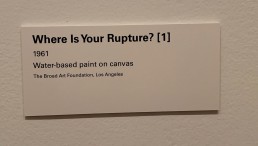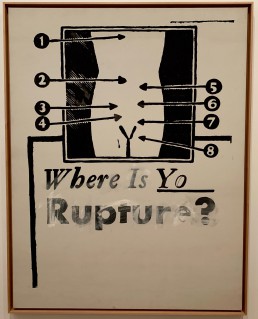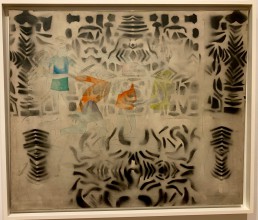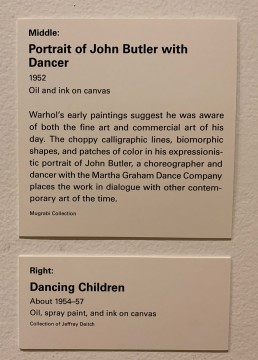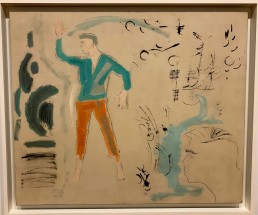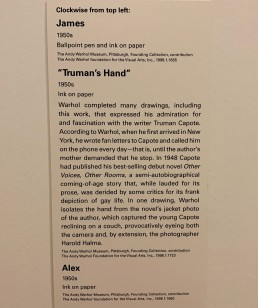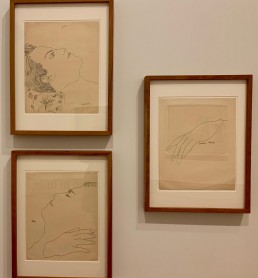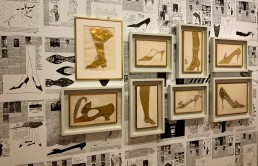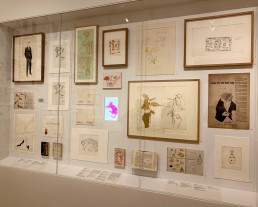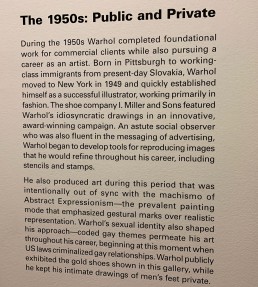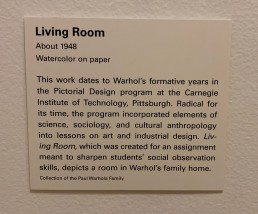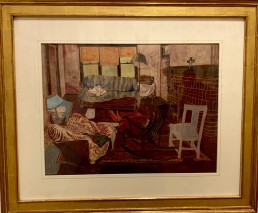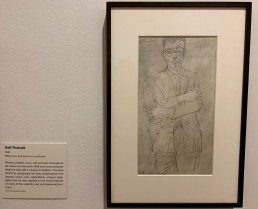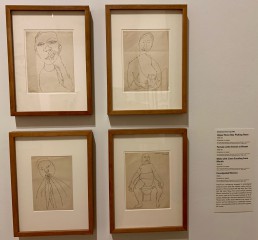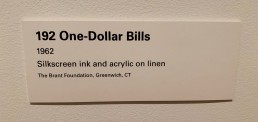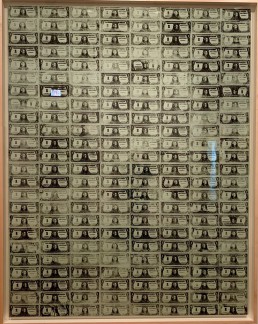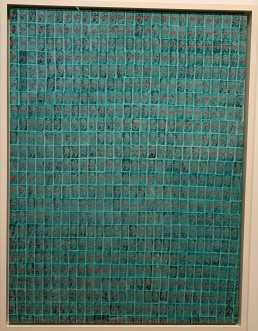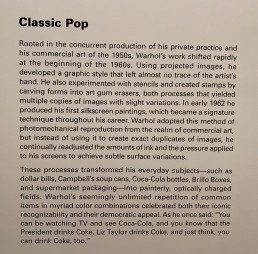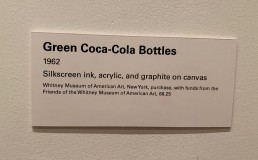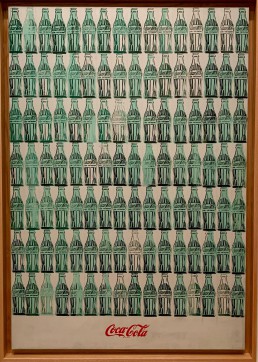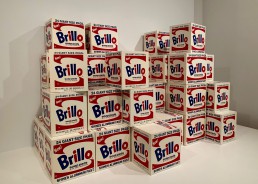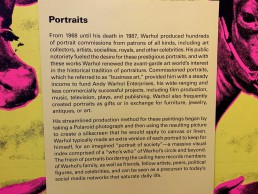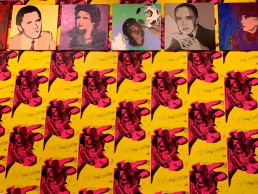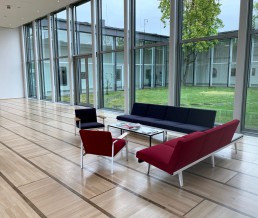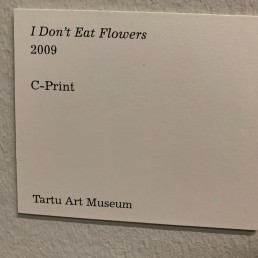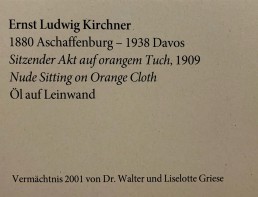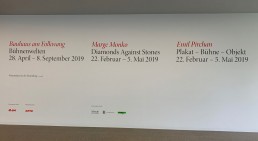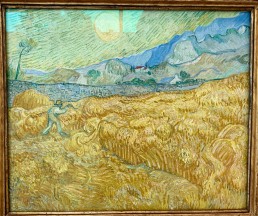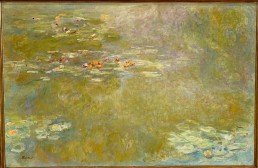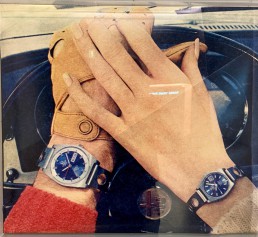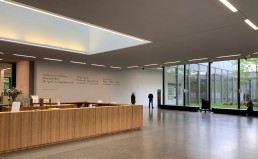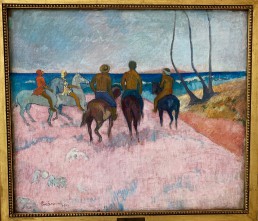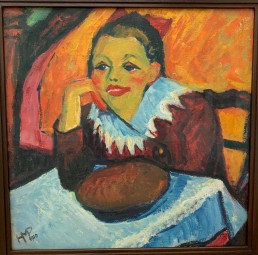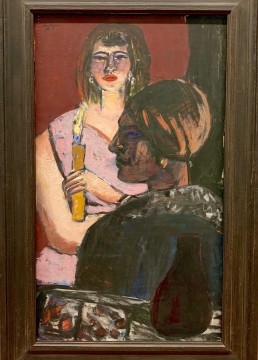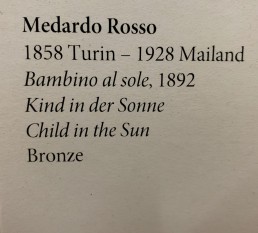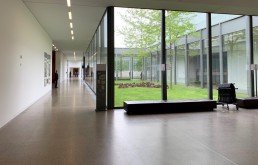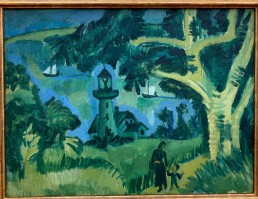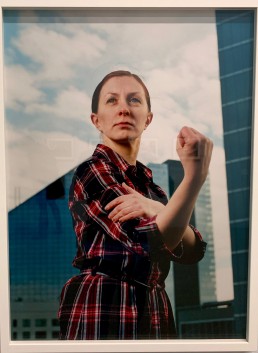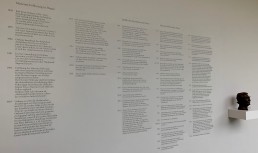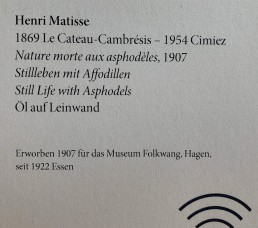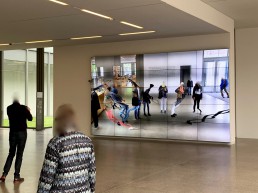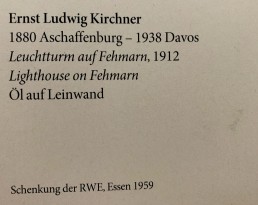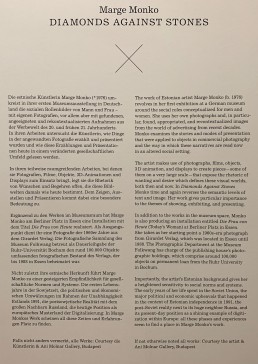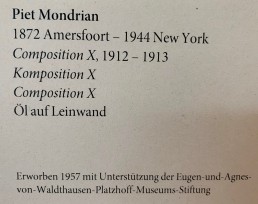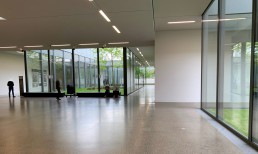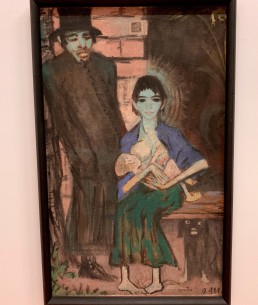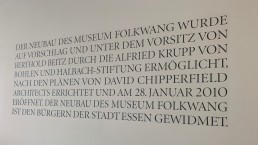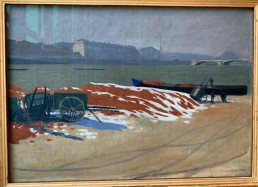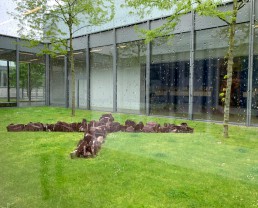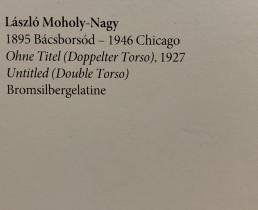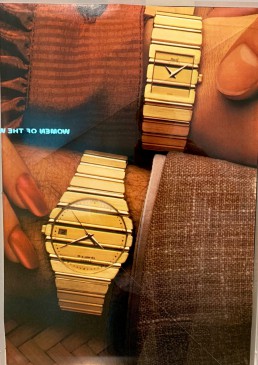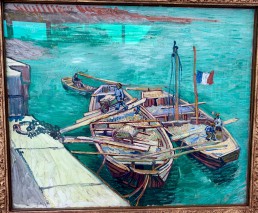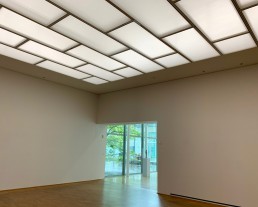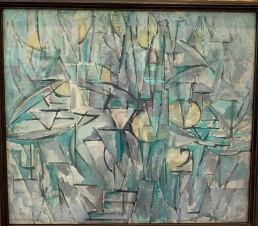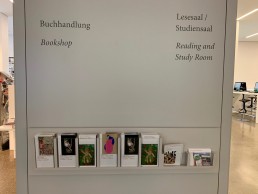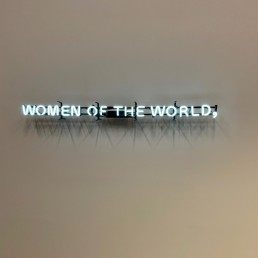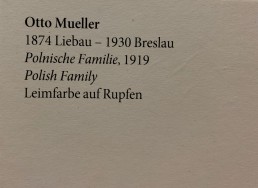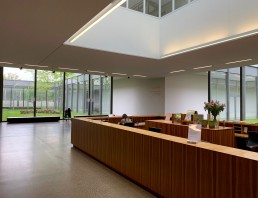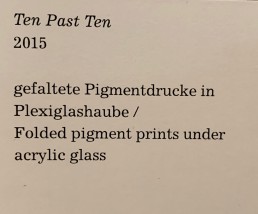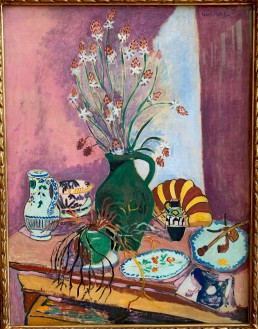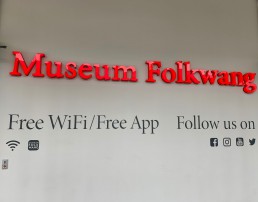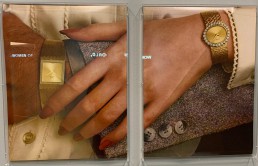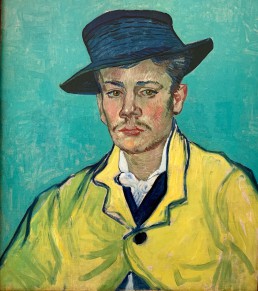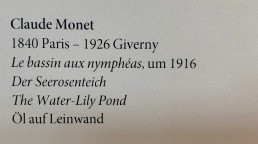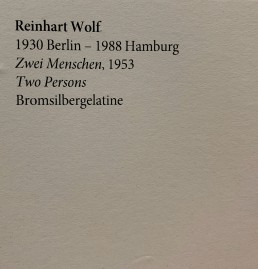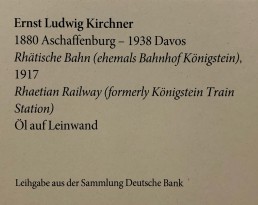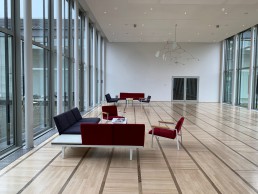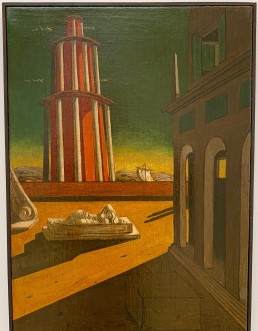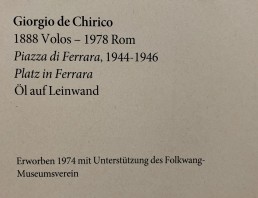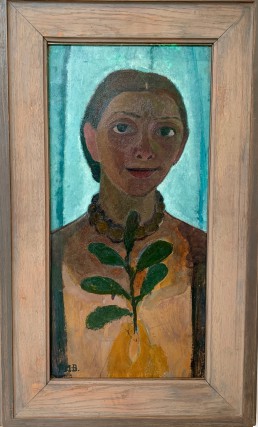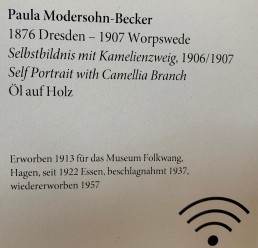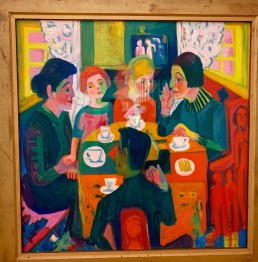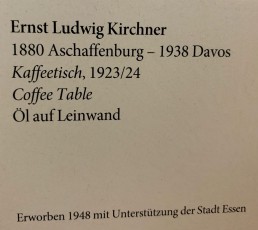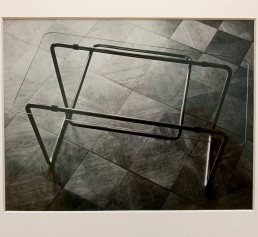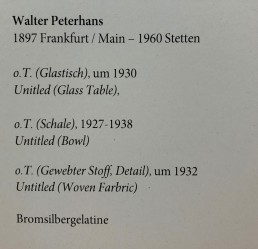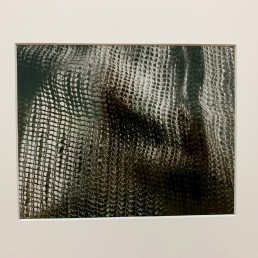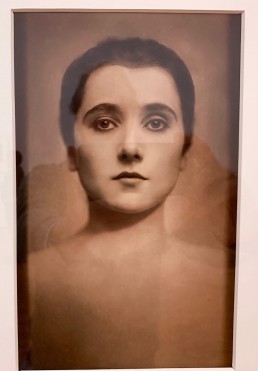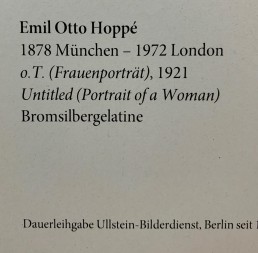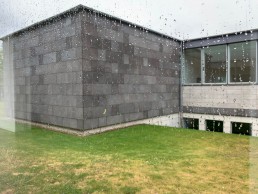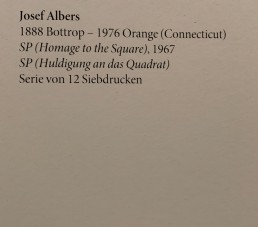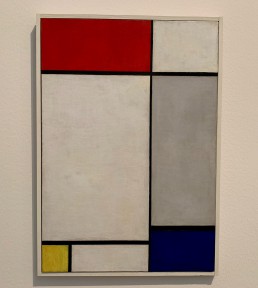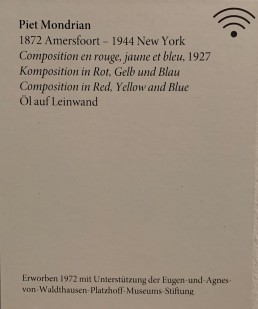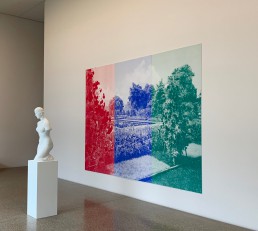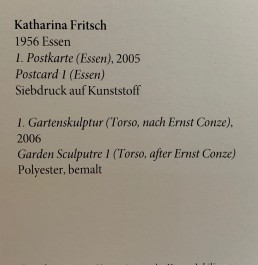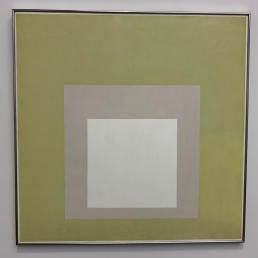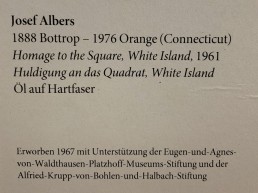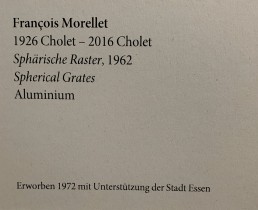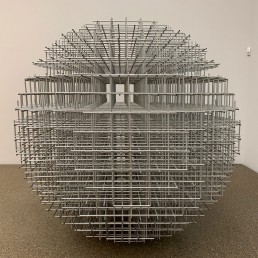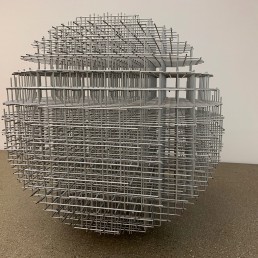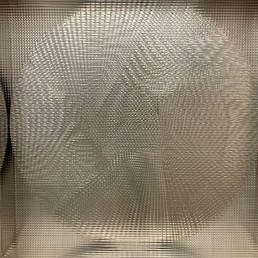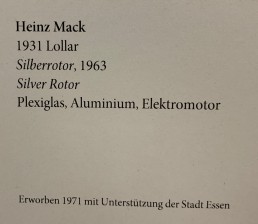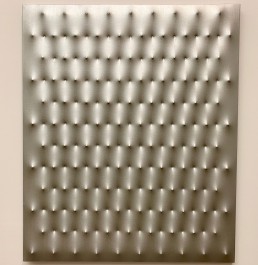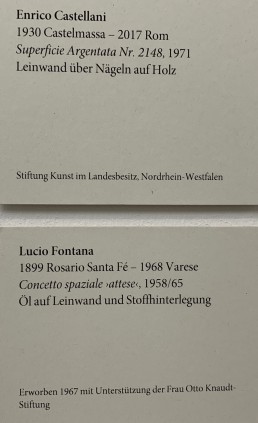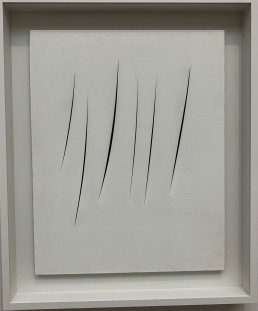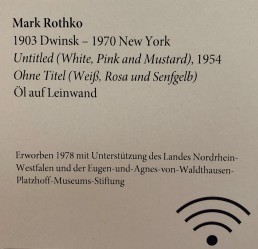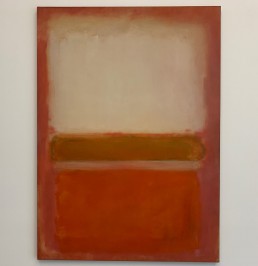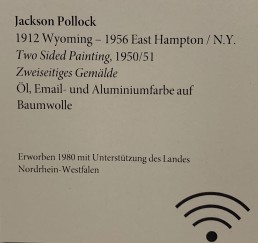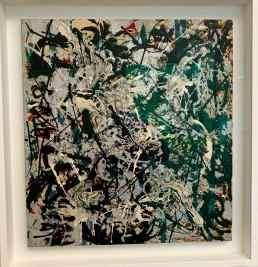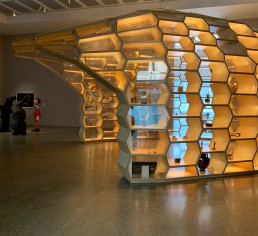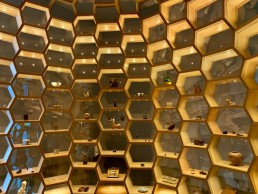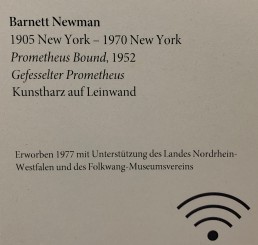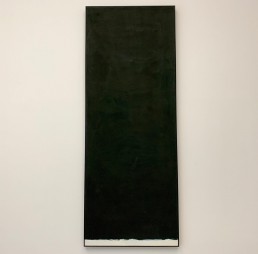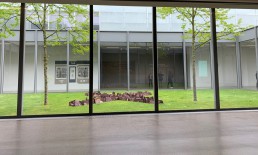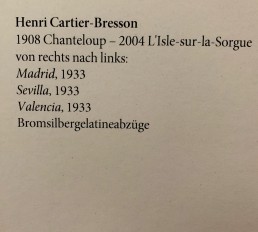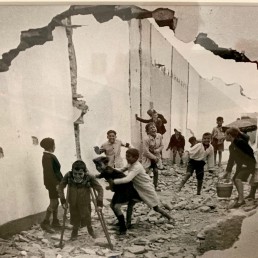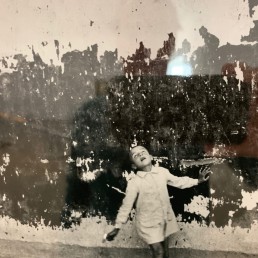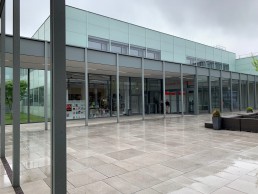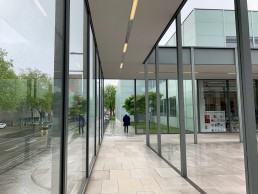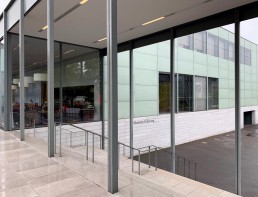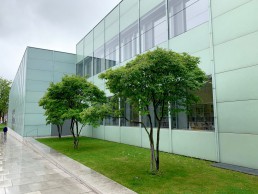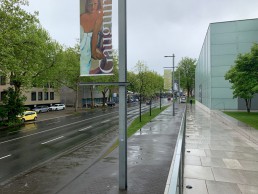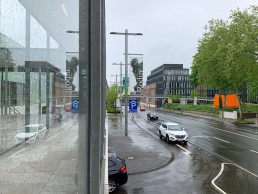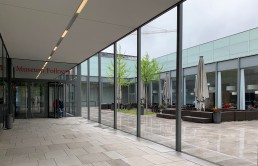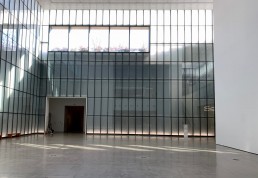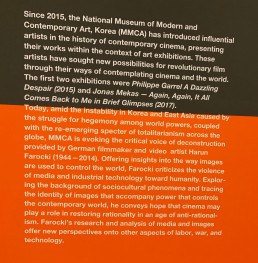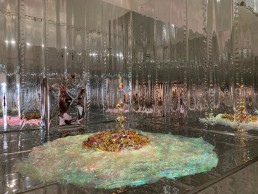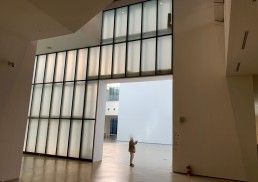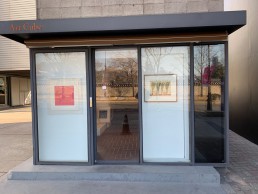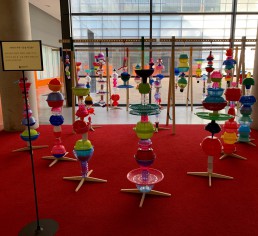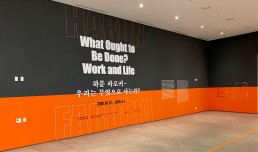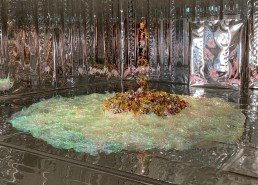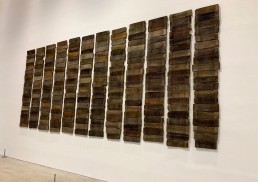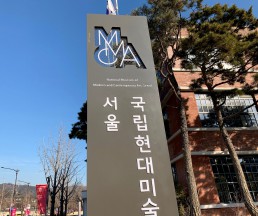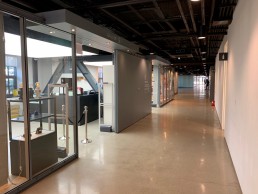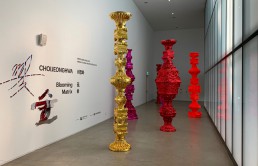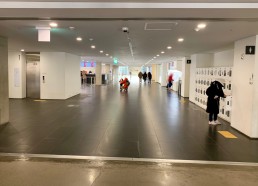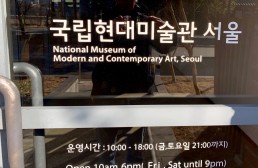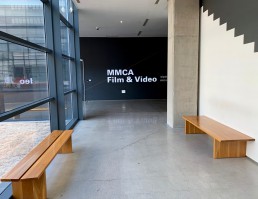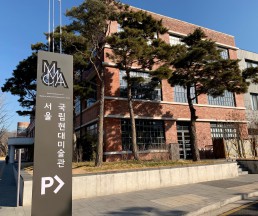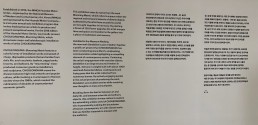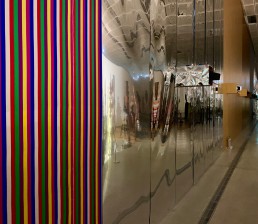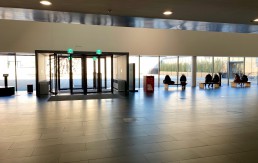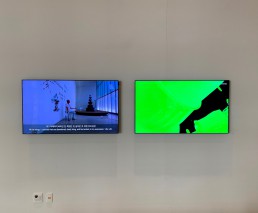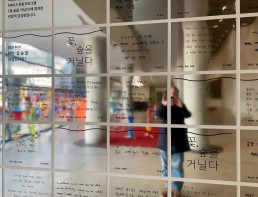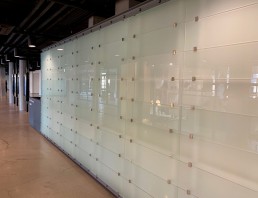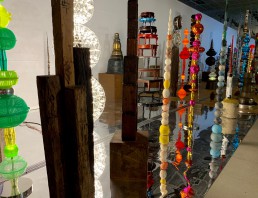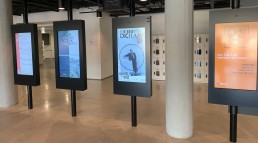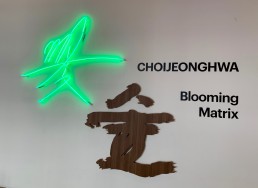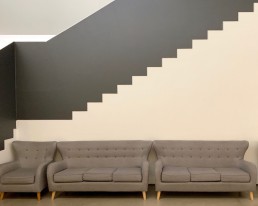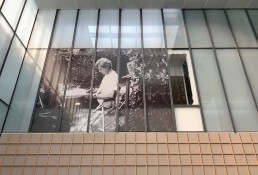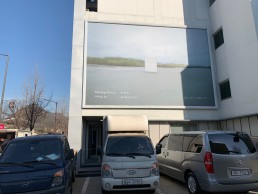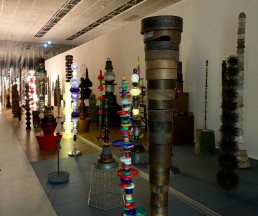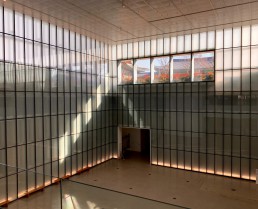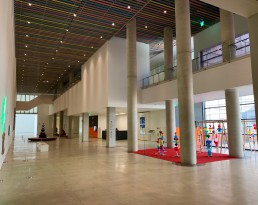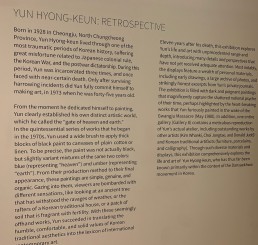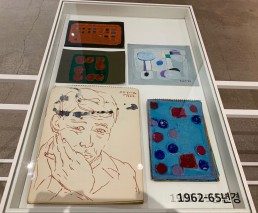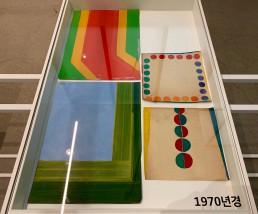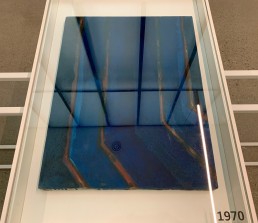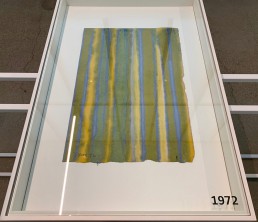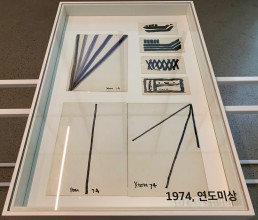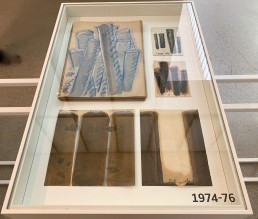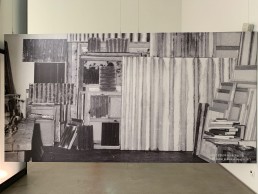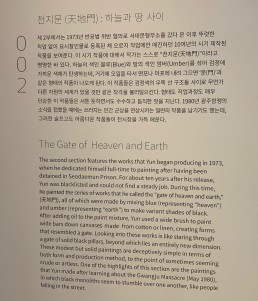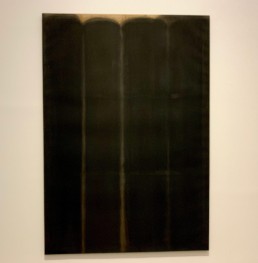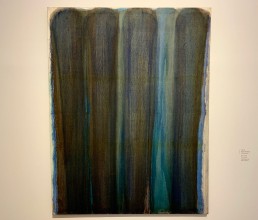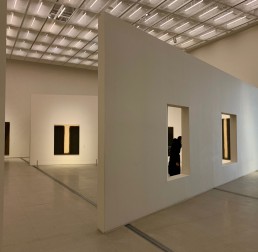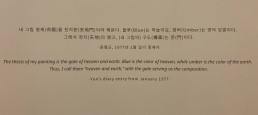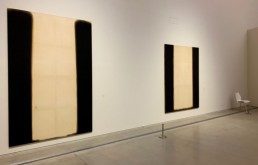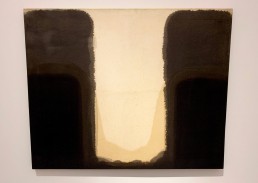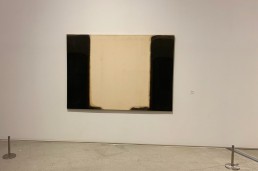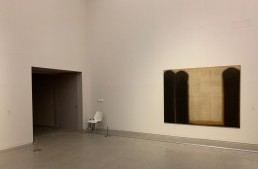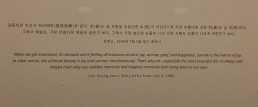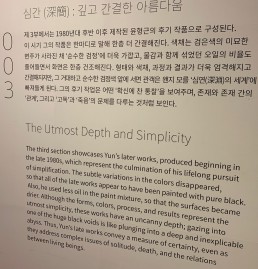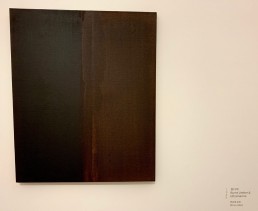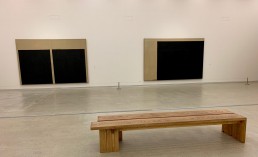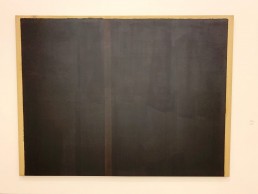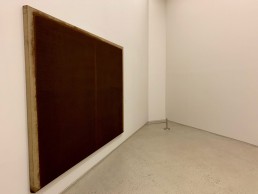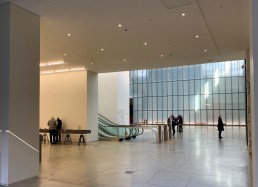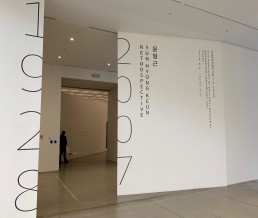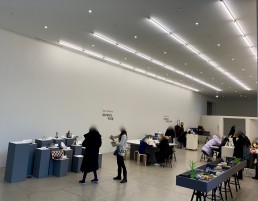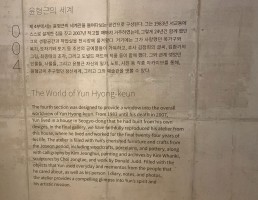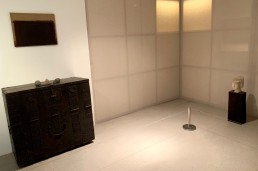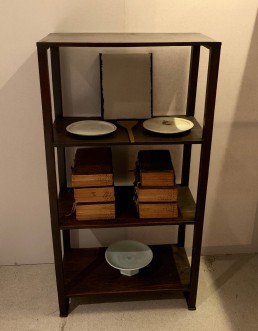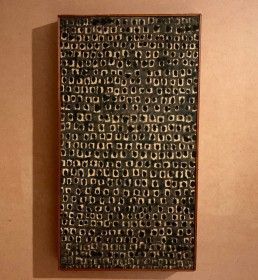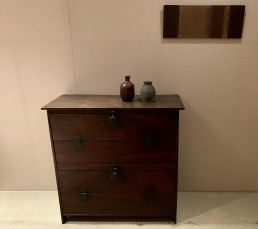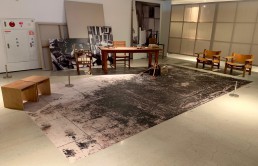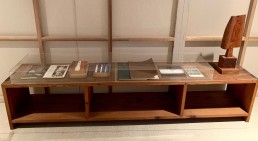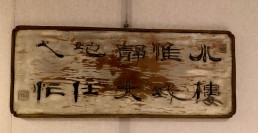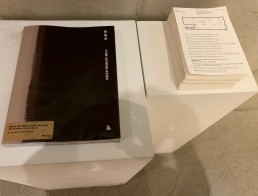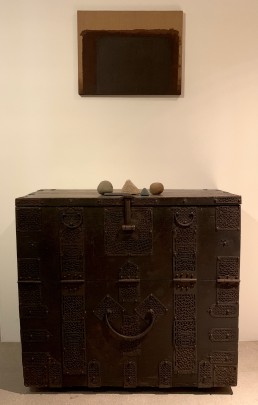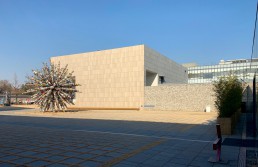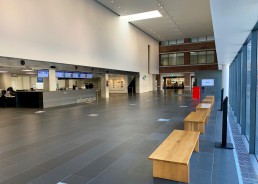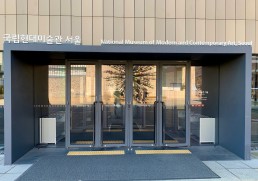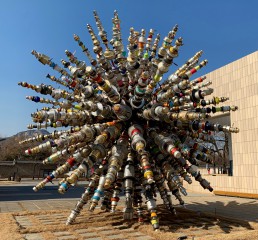Fondation Cartier de l'art Contemporain Paris
Sinds de verhuizing naar Parijs in 1994 is de Fondation Cartier pour l’art Contemporain gehuisvest in een luchtig gebouw vol licht, dat is ontworpen door de architect Jean Nouvel. Het staat in het 14e arrondissement, aan de Boulevard Raspail. Wij waren er op een zonnige zondagmiddag in oktober en Damien Hirst’s kersenbloesems kwamen daardoor extra goed uit de verf. Het gebouw is omgeven door groen, de tuin loopt er echt omheen en dat zorgt voor een hele prettige sfeer. Damien Hirst heeft er drie jaar over gedaan om de “Cherry Blossoms” te maken vanuit zijn studio in London. Hij voltooide het eerste werk in november 2020. De gehele serie omvat 107 doeken, onderverdeeld in verschillende formaten. Tijdens de tentoonstelling worden dertig schilderijen gepresenteerd, geselecteerd door Hervé Chandrès (de directeur van het Fondation Cartier) en de kunstenaar zelf.
‘De Cherry Blossoms gaan over schoonheid, leven en dood. Ze zijn extreem en bijna tacky. Ze gaan over verlangen, over hoe we dingen verwerken en waar we ze in veranderen, maar ook over de waanzinnige visuele vergankelijkheid van schoonheid – een boom in volle prachtige bloesem tegen een heldere hemel. Ze zijn opzichtig, rommelig en kwetsbaar en ik ga weg van het minimalisme en het idee van een denkbeeldige mechanische schilder. En dát is zo opwindend voor mij.’
Damien Hirst
National Gallery Washington
The National Gallery of Art in Washington maakt geen deel uit van het Smithsonian. Het is wel een van de meest bekende kunstmusea, in de top 10 van meest bezochte musea ter wereld, met o.a. een enorme collectie 17e eeuwse Nederlandse meesters. Die komen in deze post niet aan bod, daar ga ik nog een keer een aparte ‘aflevering’ van maken. Ik heb me hier gefocust op het Oostelijke gebouw (The Eastbuilding), ontworpen door architect IM Pei. Hier hangen de modernere werken met veel grote namen zoals Picasso, Mondriaan, Matisse, Pollock en Lichtenstein.
Het museum is 7 dagen per week open en, zoals geldt voor de meeste musea in Washington, gratis. Er hoort ook een beeldenpark bij van 25.000 m2. De Eastbuilding is goed te doen in een paar uur, de collectie is verdeeld over 3 verdiepingen en mooi ruim opgezet. Als je de Westbuilding, het oorspronkelijke gebouw, ook wilt bezoeken, moet je wat meer tijd uittrekken. Veel andere musea, zoals het Smithsonian (21 musea waaronder het Hirschhorn, het Natural History Museum en het National Museum for African American History and Culture) zijn op loopafstand.
Musee des beaux-arts Montreal
Het Musée des Beaux-Arts (MBAM) in Montreal van 1860 is een van de oudste musea in Noord-Amerika en Canada. Het is in het centrum van Montreal en bestaat uit verschillende gebouwen (paviljoens). Ik ben in het meest moderne gebouw geweest: het Pavillon Desmarais uit 1991 van architect Moshe Safdie. De kunst die je in dit artikel ziet en de architectuur zijn dus ook uit en van dit paviljoen. Ik vond het een erg prettig gebouw. Licht en ruim, en vooral de hallen en trappen van glas, staal en hout zijn prachtig! De collectie is vrij uitgebreid, met vooral veel Europese kunst, maar er is ook aandacht voor Amerikaanse en Canadese kunstenaars.
Musée des beaux-arts de Montréa

Beaux-Arts Pavillon 1912

Nieuwbouw van 1991

Het Musée des beaux-arts de Montréal is het oudste kunstmuseum van Canada. Het is gelegen aan de Rue Sherbrooke in het oude centrum van de stad Montreal in de Franstalige provincie Quebec en werd gesticht in 1860.
Paviljoens
Het museumcomplex bestaat uit drie paviljoens:
• Pavillon Hornstein uit 1912 van William Sutherland Maxwell, oorspronkelijk het Beaux-Arts Pavillon
• Pavillon Desmarais uit 1991 van de Israëlisch-Canadese architect Moshe Safdie
• Pavillon Stewart
Een vierde paviljoen is geprojecteerd voor 2010 (?), het Pavillon Claire en Marc Bourgie. Dit wordt een paviljoen voor Canadese kunst in het voormalige kerkgebouw van de Erskine and American United Church.
Collectie
• werken van de navolgende kunstenaars: Hans Memling, Portrait d’homme (1490); Mariotto Albertinelli, La Sainte-Famille avec l’adoration de l’enfant (omstreeks 1505); El Greco, Portrait d’homme de la maison Leiva (omstreeks 1580-1585); Pieter Brueghel de Jonge, Retour de l’auberge (vers 1620); Floris van Dijck, Pièce de banquet (1622); Jacques Linard, Nature morte aux coquillages et au corail (1640); Charles Le Brun, La déification d’Énée (1642-1644); Jacques Stella, L’embaumement du Christ (omstreeks 1655); Nicolaas Maes, L’adoration des bergers (1658); Emanuel de Witte, Intérieur avec femme jouant de l’épinette (omstreeks 1660); Peschier, Vanité (1660); Rembrandt van Rijn, Portrait d’une femme (1665); Jan Davidsz. de Heem, Nature morte aux fruits; Jacob van Ruisdael, Champs de blanchissement près de Haarlem (omstreeks 1670); Godfried Schalcken, Salomé avec la tête de Saint-Jean Baptiste (omstreeks 1700); François Boucher, L’assomption de la vierge (1758-60); Francisco Goya, Portrait de Carlos Lopez Altamirano (omstreeks 1795); Honoré Daumier, Femmes poursuivies par des satires (1850); Gustave Courbet, Le ruisseau du Puits noir (omstreeks 1855); Thomas Faed, Le dimanche dans les forêts lointaines canadiennes (1859); Paul Cézanne, La route tournante en Provence (omstreeks 1866); Camille Corot, L’île heureuse (1865-68); Alfred Sisley, L’automne: bords de la Seine près de Bourgival (1873 – 2 exemplaren); Charles-François Daubigny, Lever de lune à Auvers ou Le retour du troupeau (1877); James Tissot, Octobre (1877); Auguste Rodin, La défense ou L’appel aux armes (1879); Le penseur (un des moulages), (omstreeks 1902); Claude Monet, Falaises de Pourville, le matin (1897); William Bouguereau, Parure des champs (1884); Pierre-Auguste Renoir, Jeune fille au chapeau (omstreeks 1890); Ferdinand Hodler, Hallebardier (1895); Marc-Aurèle de Foy Suzor-Coté, Pastourelle à Vallangoujard, Seine-et-Oise (1898), Femmes de Caughnawaga (1924)
• klassiek moderne werken van: Henri Matisse, Femme assise, le dos tourné vers la fenêtre ouverte (omstreeks 1922); Salvador Dali, Portrait de Maria Carbona (1925); Lawren Stewart Harris, Le mont Temple (vers 1925); Marc-Aurèle Fortin, Sainte-Rose à midi (omstreeks 1925), Commencement d’orage sur Hochelaga (omstreeks 1940), Bœufs aux labours (vers 1946), Bagoteville au Saguenay (omstreeks 1949), Saint-Siméon (voor 1950); Kees van Dongen, La femme au canapé (omstreeks 1930); Paul-Émile Borduas, Étoile noire (1957); Jean-Paul Riopelle, Vent traversier (1952); Autriche (1954); La Roue (Cold Dog – Indian Summer), (1954-1955); Hommage à Grey Owl (1970); Soleil de minuit (1977); Guido Molinari, Mutation violet (1964); Bi-sériel, vert-bleu (1967); Alex Colville, Église et cheval (1964); Pablo Picasso, Étreinte (1971); Joan Miró, Tête (1976)
• moderne en hedendaagse werken van Amerikaanse kunstenaars (zoals Hans Hofmann, Sam Francis, Robert Rauschenberg, Alexander Calder, Louise Nevelson en Leon Golub) en Europese kunstenaars (zoals Gerhard Richter, Jörg Immendorff, Rebecca Horn, Barry Flanagan en Stephan Balkenhol). (Bron: Wikipedia)
Mondriaan in het Kunstmuseum Den Haag
Het Kunstmuseum in Den Haag (vroeger het Gemeente Museum) heeft de grootste Mondriaan collectie ter wereld, waaronder de beroemde “Victory Boogie Boogie”, gemaakt in New York. Aangezien ik net de, overigens zeer aan te raden, biografie van Hans Janssen over Mondriaan had gelezen, was het een uitgelezen kans om ook op Museume aandacht te besteden aan deze grote Nederlandse kunstenaar.
In de tentoonstelling wordt ook aandacht besteedt aan een aantal van Mondriaan’s tijdgenoten zoals Rietveld en Van Doesburg. In dit overzicht is alleen werk van Mondriaan zelf te zien, aangezien ik echt alleen zijn werk wil laten zien. Je ziet mooi het verschil tussen zijn vroege figuratieve werk en vanaf 1910-1911 de overgang naar het abstracte met als hoogtepunt natuurlijk de “Victory Boogie Boogie”van 1942-1944, geschilderd vlak voor zijn dood.
Pieter Cornelis (Piet) Mondriaan (Amersfoort, 7 maart 1872 – New York, 1 februari 1944) was een Nederlandse kunstschilder en kunsttheoreticus, die op latere leeftijd in het buitenland woonde en werkte. Mondriaan wordt algemeen gezien als een pionier van de abstracte en non-figuratieve kunst. Vooral zijn latere geometrisch-abstracte werk, met de kenmerkende horizontale en verticale zwarte lijnen en primaire kleuren, is wereldberoemd en dient als inspiratiebron voor vele architecten en ontwerpers van toegepaste kunst. Hij was een van de belangrijkste medewerkers van het tijdschrift De Stijl en ontwikkelde een eigen kunsttheorie, die hij nieuwe beelding of neoplasticisme noemde. Hij is in het buitenland beter bekend als Mondrian, een wijziging die hij zelf invoerde nadat hij in Parijs was gaan wonen. In 1908 werd hij lid van de Theosofische Vereniging. (Bron: Wikipedia)
Het Kunstmuseum Den Haag is een museum voor moderne kunst en kunstnijverheid in Den Haag. Het werd in 1866 gesticht als ‘Museum voor Moderne Kunst’. Later werd tot 1998 de naam ‘Haags Gemeentemuseum’ gebruikt, en vervolgens tot 2019 ‘Gemeentemuseum Den Haag’. De instelling is vooral bekend vanwege de verzameling werken van schilders van de Haagse School, Mondriaan, Picasso, Van Doesburg, Monet en Toorop. Het huidige gebouw, een ontwerp in de stijl van het rationalisme door de Nederlandse architect Berlage, werd geopend in 1935.
Naast een collectie beeldende kunst, met schilderijen, beeldhouwwerken en affiches, bezit het museum een collectie kunstnijverheid, waarin onder meer porselein, mode, sieraden, stijlkamers en muziekinstrumenten.
De collectie Moderne Kunst van het Kunstmuseum biedt een overzicht van de Nederlandse kunst sinds het begin van de 19e eeuw, aangevuld met karakteristieke voorbeelden van kunst die in dezelfde periode in andere landen ontstond. Verzamelkernen zijn: de Haagse School, het Symbolisme rond 1900, de kunstenaars rond De Stijl en het Bauhaus en het Expressionisme.
Het Kunstmuseum Den Haag bezit schilderijen van onder anderen Piet Mondriaan, Pablo Picasso, Theo van Doesburg, Bart van der Leck, Charley Toorop, Claude Monet en Francis Bacon. Tevens kocht het museum na de grote New Babylon overzichtstentoonstelling in 1974 een groot deel van de New Babylon werken van Constant Nieuwenhuijs. Het museum heeft een volledige collectie prenten van de Nederlandse graficus M.C. Escher, w.o. de Metamorphose III van 7 meter en een uitgebreid persoonlijk archief. Delen worden sinds 2002 permanent tentoongesteld in een apart museum aan het Haagse Lange Voorhout bij: Escher in Het Paleis.
Het museum bezit de grootste verzameling schilderijen en tekeningen van Mondriaan ter wereld. Dit is vooral te danken aan de kunstverzamelaar Sal Slijper, die na zijn dood in 1971 een groot aantal werken van Mondriaan – voornamelijk uit zijn figuratieve periode – naliet aan het museum. Verder bezit het museum Mondriaans laatste schilderij Victory Boogie Woogie, een schenking uit 1998 van De Nederlandsche Bank. (Bron: Wikipedia)
Kunst Museum Bonn
Het KunstMuseum Bonn heb ik vorig jaar, net voordat alle musea weer dicht gingen, bezocht. Het gebouw zelf is modern en van sommige kanten gezien echt mooi en van andere kanten weer helemaal niet. Dat geldt eigenlijk ook voor de binnenkant van het museum, maar goed, die beleving is natuurlijk voor iedereen anders. Het is in ieder geval ruim en open en vooral de buitenruimte van het museum is erg prettig, in een parkachtige omgeving.
De collectie is modern en divers en zeker de moeite waard. Toen wij er waren was een aanzienlijk deel dicht, dus we hebben helaas maar een klein gedeelte van de collectie kunnen bekijken. Wordt vervolgd zou ik dus zeggen, maar geniet hopelijk van het volgende.
Het Kunstmuseum Bonn maakt deel uit van de Museumsmeile in Bonn en toont sinds 1992 voornamelijk werk van de periode na 1945.
De collectie van het museum telt twee zwaartepunten, het Rheinische Expressionisme en de kunst van na de Tweede Wereldoorlog, met de nadruk op de zestiger, zeventiger en tachtiger jaren en nog enigszins aanvang negentiger jaren. Het accent ligt bij Duitse kunstenaars als Georg Baselitz, Joseph Beuys, Hanne Darboven, Anselm Kiefer, Blinky Palermo en Wolf Vostell, maar dat sluit niet uit dat ook werk van niet-Duitse kunstenaars, zoals van de Franse schilder Robert Delaunay in de August Macke-afdeling en van de Engelse conceptuele kunstenaar Richard Long getoond wordt. Werk van Duitse kunstenaars als Palermo en Beuys wordt geëxposeerd in combinatie met de internationale avant-garde-kunstenaar Lucio Fontana en Jannis Kounellis met Gerhard Merz.
Het museum zegt over de eigen collectie:„Es gibt keinen anderen Ort in der Welt an dem deutsche Kunst nach ’45 so ausgewählt, so besonders und so prägnant studiert werden kann wie in Bonn.“. (Bron: Wikipedia)
The Peggy Guggenheim Collection Venice
The Peggy Guggenheim Collection Venice
Tijdens een recente vakantie naar Noord-Italie bezocht ik Venetie en -uiteraard- ook de Peggy Guggenheim Collection. Het palazzo waarin het museum is gehuisvest ligt op een prachtige plek aan het Grand Canal. dus alleen al vanuit dat oogpunt een bezoek waard. Het museum is vrij overzichtelijk, alles op een verdieping en niet enorm groot, dus het kost je geen uren. Vooral de levensgeschiedenis van Peggy Guggenheim is interessant en zeker een aanrader om eerst even te lezen, dan zegt de collectie je toch wat meer. Op YouTube vind je ook de trailer van ‘Art Addict’ een documentaire over haar.
‘I dedicated myself to my collection. A collection means hard work. It was what I wanted to do and I made it my life’s work. I am not an art collector. I am a museum.’
Peggy Guggenheim was born in New York on 26 August 1898, the daughter of Benjamin Guggenheim and Florette Seligman. Benjamin Guggenheim was one of seven brothers who, with their father, Meyer (of Jewish Swiss German origin), created a family fortune in the late 19th century from the mining and smelting of metals, especially silver, copper and lead. The Seligmans were a leading banking family. In April 1912, Peggy’s father died heroically on the SS Titanic during its maiden voyage from England to the United States.
Europe: Paris and London
After growing up in New York City, Peggy traveled to Europe in 1921. Thanks to her husband Laurence Vail (the father of her two children Sindbad and Pegeen, who was an artist), Peggy soon found herself at the heart of Parisian bohème and American expatriate society. Many of her acquaintances of the time, such as Constantin Brancusi, Djuna Barnes and Marcel Duchamp, were to become lifelong friends.
When in 1938, Peggy opened an art gallery in London, called Guggenheim Jeune, she was beginning, at 39 years old, a career which would significantly affect the course of post-war art. Her friend Samuel Beckett urged her to dedicate herself to contemporary art as it was “a living thing,” and Duchamp introduced her to artists and taught her, as she put it, “the difference between abstract and Surrealist art.” The first show presented works by Jean Cocteau, and the second was the first solo exhibition of works by Vasily Kandinsky in Great Britain, followed by solo shows given to Yves Tanguy and Rita Kernn-Larsen among others.
The first work that Peggy Guggenheim purchased for her collection was the sculpture Head and Shell (ca. 1933) by Jean Arp. In 1939, Peggy conceived “the idea of opening a modern museum in London,” with the British art historian Herbert Read as its director. The museum was to be formed on historical principles and a list of artists, drawn up by Read and later revised by Duchamp and Nelly van Doesburg, the widow of Dutch artist Theo van Doesburg, would become the basis of her collection.
My motto was Buy a picture a day and I lived up to it.
In 1939-40, having abandoned her project for a museum in London, Peggy relocated to Paris and busily acquired works for her collection, resolving to “buy a picture a day.” She purchased many masterpieces during these turbulent times, including works by Georges Braque, Salvador Dalí, Robert Delaunay, Piet Mondrian and Francis Picabia, among others. She astonished Fernand Léger when she bought his Men in the City (1919) on the day that Hitler invaded Norway. She acquired Brancusi’s Bird in Space (1932-40) as the Germans approached Paris, and only then decided to escape the city for the south of France.
In July 1941, Peggy fled Nazi-occupied France and returned to her native New York, together with her children and Laurence Vail (along with his second wife Kay Boyle and their children), as well as Max Ernst, who was to become her second husband a few months later.
In October 1942, Peggy opened her museum/gallery Art of This Century in Manhattan, at 30 West 57th Street. Designed by the Austrian architect Frederick Kiesler, Art of This Century consisted of innovative and visually compelling exhibition rooms and soon became the most stimulating venue for contemporary art in New York City. Of the opening night, she wrote: “I wore one of my Tanguy earrings and one made by Calder in order to show my impartiality between Surrealist and Abstract Art.” She produced a catalogue edited with André Breton, with a cover design by Ernst. Peggy exhibited her collection of Cubist, abstract and Surrealist art and held temporary exhibitions of leading European artists. She also showed the work of many unknown young Americans at the time such as William Baziotes, David Hare, Robert Motherwell, Robert de Niro Sr, Jackson Pollock, Richard Pousette-Dart, Mark Rothko, and Clyfford Still.
Opening this gallery and its collection to the public during a time when people are fighting for their lives and freedom is a responsibility of which I am fully conscious. This undertaking will serve its purpose only if it succeeds in serving the future instead of recording the past.
In 1943, Peggy gave Pollock the first of four solo exhibitions and a stipend. She actively promoted and sold his paintings, and commissioned his largest, Mural (1943) which she later gave to the University of Iowa. Peggy also organized two important exhibitions dedicated to women artists, as well as solo exhibitions of female artists including Irene Rice Pereira and Janet Sobel.
Pollock and his fellow artists were among the pioneers of American Abstract Expressionism. One of the sources of this movement was Surrealism, which the artists encountered at Art of This Century. More important, however, were the encouragement and support that Peggy, together with her friend and assistant Howard Putzel, gave to the members of the nascent New York avant-garde. Peggy and her collection thus played a vital intermediary role in the development of America’s first art movement of international importance.
Art of This Century soon became a center for all avant-garde activities. The young American artists … started an entirely ‘new’ school of painting … named Abstract Expressionism.
… I loved Europe more than America, and when the war ended I couldn’t wait to go back. … On my way there, I decided Venice would be my future home. I had always loved it more than any place on earth and felt I would be happy alone there.
back to Europe: Venice
In 1947, Peggy decided to return to Europe, where she exhibited her collection for the first time at the 1948 Venice Biennale, in the Greek pavilion as the country was at civil war. Thus, the works of artists such as Arshile Gorky, Pollock, and Rothko were exhibited for the first time in Europe. The presence of Cubist, abstract, and Surrealist art made the pavilion the most coherent survey of Modernism yet to be shown in Italy.
Peggy acquired Palazzo Venier dei Leoni, an unfinished mid-18th century building on the Grand Canal, where she spent the rest of her life. In 1949, she organized an exhibition of contemporary sculpture. In 1950, she organized the first European exhibition of works by Pollock in the Ala Napoleonica of the Museo Correr in Venice. Subsequently, her collection traveled to Florence and Milan, and later Amsterdam, Brussels, and Zurich. From 1951, Peggy opened her house and her collection several afternoons a week to the public in the spring, summer and early autumn months. During her Venetian years, she continued to collect works of art and to support artists, such as the Italians Edmondo Bacci, Piero Dorazio, Tancredi Parmeggiani, and Emilio Vedova, as well as works by Marina Apollonio, Karel Appel, Francis Bacon, Kenzo Okada, Graham Sutherland among others. Peggy gave Tancredi a monthly stipend and a studio space in the basement of her palazzo, and organized a solo show in her home in 1954. In 1962, her adopted city nominated her an Honorary Citizen of Venice.
In 1969, the Solomon R. Guggenheim Museum in New York invited Peggy to show her collection there. In 1970 she donated her palazzo and in 1976 her collection to the Solomon R. Guggenheim Foundation. The Foundation was created in 1937 by Peggy Guggenheim’s uncle Solomon, in order to promote the understanding of art and establish and operate “a museum or museums,” beginning with the Solomon R. Guggenheim Museum which holds his collection and, since 1959, has been housed in Frank Lloyd Wright’s spiral structure on upper Fifth Avenue in New York.
Peggy died aged 81 on 23 December 1979. Her ashes are placed in a corner of the garden of her museum. Since then, under the oversight of the Solomon R. Guggenheim Foundation, the Peggy Guggenheim Collection has become one of the finest museums of modern art in the world. (Bron: https://www.guggenheim-venice.it/en/art/in-depth/peggy-guggenheim/about-peggy/).
Sao Paulo Art Museums
Museu de Arte Moderna, Museu de Arte Contemporanea en Museu de Arte Sao Paulo.
Van deze drie musea in Sao Paulo, zijn het Museo de Arte Moderna (MAM) en het Museu de Arte Contemporanea (MAC) in het Ibirapuera Park vlakbij elkaar en niet zo groot, dus erg goed te combineren. Bovendien is het Ibirapuera Park erg leuk en wel groot overigens. Zeker in het weekend is het vol met activiteiten, waaraan hele families deelnemen. Je vind er ook nog het Auditorio Ibirapuera van Oscar Niemeyer als bonus. Toen ik er was was dat gesloten ivm een verbouwing, dus ik heb alleen foto’s van de buitenkant kunnen maken. De collecties van beide musea zijn vrij verschillend. Het MAM heeft wisselende tentoonstellingen van met name Braziliaanse kunstenaars en MAC, wat bij de Universiteit hoort, heeft geen grote, maar wel een internationale collectie kunst van bekende kunstenaars als Marino Marini en Kenny Scharf.
Het Museu de Arte Sao Paulo (MASP) daarentegen is zeker groot. Het is een opvallend gebouw aan de Avenida Paulista met z’n enorme rode ‘poten’, maar het zijn geen poten, eerder hele grote rechte U- profielen, die de glas- en betonconstructie als het ware vasthouden. Vooral de manier van exposeren in het Masp is bijzonder. De schilderijen hangen niet aan een wand, maar staan op zich in een glazen display, zodat je er ook omheen kunt lopen en de achterkant kunt zien. Uniek in de wereld en omdat het anders is ook goed, omdat je de werken zo toch weer op een andere manier ‘ziet’.
Vooral op zondag is het MASP erg leuk om te bezoeken, omdat de Avenida Paulista dan is afgesloten voor verkeer en er van alles is te beleven. Vanuit het museum heb je dan ook nog eens een mooi uitzicht op alles wat er gebeurt.
ABOUT MASP
The Museu de Arte de São Paulo (MASP) is a private not-for-profit museum founded in 1947 by business mogul and patron of the arts Assis Chateaubriand (1892–1968), becoming the first modern museum in the country. Chateaubriand invited Italian art dealer and critic Pietro Maria Bardi (1900–1999) to direct MASP, and Lina Bo Bardi (1914–1992) to conceive the architecture and the exhibition design. With the most important collection of European art in the southern hemisphere, MASP’s holdings currently consist of more than 11 thousand artworks, including paintings, sculptures, objects, photographs, videos and pieces of clothing from various periods, from Europe, Africa, Asia and the Americas.
Initially located on the street 7 de Abril, in downtown São Paulo, in 1968 the museum was transferred to its current location on Avenida Paulista, in the iconic building designed by Lina Bo Bardi, which has become a landmark in the history of 20th-century architecture. Making use of glass and concrete, in her architecture Lina Bo Bardi put rough, unfinished surfaces into harmony with aspects of lightness, transparency and suspension. The ground-level plaza under the building’s immense free span was designed as a multipurpose public square.
The architect’s radicality is also present in the glass display easels created to show the collection on the building’s second floor. By taking the artworks off the walls, the display easels question the traditional model of the European museum, in which the spectator is led to follow a linear narrative suggested by the order and arrangement of the artworks in the rooms. In MASP’s spacious picture gallery, the suspended and transparent exhibition design allows the public to engage in a closer relationship with the collection since the visitor can choose his or her own path among the artworks, move around them and see their backs.
Besides the long-term show Acervo em transformação [Collection in Transformation] in the museum’s picture gallery, throughout each year there is a broad programming of group exhibitions and solo shows articulated around thematic axes: histories of sexuality (2017), Afro-Atlantic histories (2018), histories of feminism/women (2019). It is important to consider the plural quality of the term “histories,” pointing to multiple, diverse and polyphonic histories, open, inconstant and unfinished histories, fragmented and layered histories, nontotalizing and nondefinitive histories. In Portuguese, the word histórias can denote either fictional stories or factual histories, narratives that can be personal and political, private and public, micro and macro.
This approach reflects the museum’s new mission, established in 2017: “MASP, a diverse, inclusive and plural museum, has the mission to establish, in a critical and creative way, dialogues between past and present, cultures and territories, through the visual arts. To this end, it should enlarge, conserve, research and disseminate its collection, while also promoting the encounter between its various publics and art through transformative and welcoming experiences.”
The calendar of exhibitions is complemented by the public programs developed by the museum’s mediation team and includes international seminars, lectures held on the first Saturday of each month, the MASP teachers program, workshops, courses in the MASP school, and a program of films and videos. To enlarge and perpetuate the discussion around all this programming, the museum produces a series of publications including catalogs of exhibitions and collections, anthologies of the seminars and lectures, as well as materials focused on special projects such as artwork restorations.
OUR MISSION
This approach reflects the museum’s new mission, established in 2017: “MASP, a diverse, inclusive and plural museum, has the mission to establish, in a critical and creative way, dialogues between past and present, cultures and territories, through the visual arts. To this end, it should enlarge, conserve, research and disseminate its collection, while also promoting the encounter between its various publics and art through transformative and welcoming experiences. (Bron: www.masp.org.br)
Andy Warhol in het Art Institute Chicago
Het was alweer veel te lang geleden dat ik in het Art Institute van Chicago was en toen ik dan ook zag dat er een Andy Warhol overzichtstentoonstelling was, kon ik een nieuw bezoek natuurlijk niet langer uitstellen. Bovendien is er, al in 2009, een nieuwe Modern Art vleugel aangebouwd door architect Renzo Piano, dus die kon ik ook meteen bekijken. Deze post gaat echter alleen over Warhol en in een volgende post komt die ‘nieuwe’ vleugel met inhoud aan bod.
Deze Warhol tentoonstelling ‘From A to B and Back Again’, is de eerste retrospectieve in 30 jaar en was eerder te zien in New York en San Francisco en sluit nu af in Chicago. Het beslaat zijn hele oeuvre van 1948 tot 1985. Warhol overleed in 1987 op 58 jarige leeftijd. Het zijn zo’n 400 werken, van relatief onbekend tot de beroemde ‘Shot Orange Marilyn’ uit 1964.
Voor directe info van het Art Institute Chicago: https://www.artic.edu/exhibitions/2937/andy-warhol-from-a-to-b-and-back-again
Andy Warhol (/ˈwɔːrhɒl/;[1] born Andrew Warhola; August 6, 1928 – February 22, 1987) was an American artist, director, and producer who was a leading figure in the visual art movement known as pop art. His works explore the relationship between artistic expression, advertising, and celebrity culture that flourished by the 1960s, and span a variety of media, including painting, silkscreening, photography, film, and sculpture. Some of his best known works include the silkscreen paintings Campbell’s Soup Cans (1962) and Marilyn Diptych (1962), the experimental film Chelsea Girls (1966), and the multimedia events known as the Exploding Plastic Inevitable (1966–67).
Born and raised in Pittsburgh, Warhol initially pursued a successful career as a commercial illustrator. After exhibiting his work in several galleries in the late 1950s, he began to receive recognition as an influential and controversial artist. His New York studio, The Factory, became a well-known gathering place that brought together distinguished intellectuals, drag queens, playwrights, Bohemian street people, Hollywood celebrities, and wealthy patrons.[2][3][4] He promoted a collection of personalities known as Warhol superstars, and is credited with inspiring the widely used expression “15 minutes of fame.” In the late 1960s, he managed and produced the experimental rock band The Velvet Underground and founded Interview magazine. He authored numerous books, including The Philosophy of Andy Warhol and Popism: The Warhol Sixties. He lived openly as a gay man before the gay liberation movement. After gallbladder surgery, Warhol died of cardiac arrhythmia in February 1987 at the age of 58.
Warhol has been the subject of numerous retrospective exhibitions, books, and feature and documentary films. The Andy Warhol Museum in his native city of Pittsburgh, which holds an extensive permanent collection of art and archives, is the largest museum in the United States dedicated to a single artist. Many of his creations are very collectible and highly valuable. The highest price ever paid for a Warhol painting is US$105 million for a 1963 canvas titled Silver Car Crash (Double Disaster); his works include some of the most expensive paintings ever sold.[5] A 2009 article in The Economist described Warhol as the “bellwether of the art market”.[6] Bron: Wikipedia.
Museum Folkwang Essen
Het museum Folkwang in Essen is het oudste museum voor moderne kunst in Duitsland. Voor ons Nederlanders bovendien erg goed te bezoeken. Het is niet ver over de grens. Vanuit bijv. Utrecht rijd je er heen in ongeveer 1u en 40 minuten. Er is een parkeergarage onder het museum.
MuseuMe heeft mede als doel zoveel mogelijk musea voor moderne kunst wereldwijd te laten zien, dus deze mag zeker niet ontbreken. Het was een regenachtige dag toen wij het museum bezochten en het was erg rustig. Zoals je op de foto’s kunt zien is het een heel ruim opgezet museum. Grote, lichte en hoge ruimtes met veel glas. Er waren, naast de vaste collectie, twee bijzondere tentoonstellingen, waarvan je het werk van Marga Monko hier gedeeltelijk terug kunt zien. Verder ging onze aandacht vooral uit naar de vaste collectie.
Die vaste collectie is vrij gevarieerd, met vrij veel werk van Van Gogh en van Kirchner, en ook Jackson Pollock, Barnett Newman en Mark Rothko zijn vertegenwoordigd. Het museum heeft ook een uitgebreide fotocollectie, daarvan zie je hier helaas maar een paar voorbeelden, bijv. van Cartier-Bresson. Foto’s maken van foto’s in een museum blijft bovendien vrij lastig.
Het is al met al een heel prettig museum, met er tegenover een prima restaurant (ook voor koffie overigens). Niet heel spectaculair, zeker wel de moeite waard!
Het kunstmuseum werd aanvankelijk in de stad Hagen gesticht door Karl Ernst Osthaus. Het werd gebouwd van 1899 tot 1902 in de neorenaissancestijl, naar een ontwerp van de Berlijner Paul Gérard. Het interieur werd uitgevoerd door de Belgische kunstenaar Henry Van de Velde. Het museum werd in 1902 als Museum Folkwang geopend.
Naast werken van George Minne, Auguste Rodin, Wilhelm Lehmbruck, Pierre-Auguste Renoir, Gustave Courbet, Vincent van Gogh, Paul Cézanne en Paul Gauguin, waren het vooral de kunstenaars van de schilderschool in het Folkwang, die het museum een goede naam bezorgden. Tot deze naar Hagen uitgenodigde kunstenaars behoorden Christian Rohlfs, Johan Thorn Prikker, Emil Rudolf Weiß en Milly Steger.
Toen Osthaus in 1921 overleed, verkochten zijn erfgenamen de kunstcollectie aan de stad Essen. Sinds 1955 bevindt zich het Karl Ernst Osthaus-Museum in het voormalige Folkwang-gebouw.
In 1922 fuseerde het Folkwang met het sinds 1906 in Essen gevestigde Essener Kunstmuseum onder de nieuwe naam Museum Folkwang. In de jaren twintig en dertig werd de collectie gestaag uitgebreid, waarbij met name de Franse Impressionisten veel aandacht kregen.
Gedurende de nationaalsocialistische tijd werden in 1937 reeds 59 schilderijen inbeslaggenomen en bij de confiscaties tijdens de actie „Entartete Kunst“ verloor het museum meer dan 1000 kunstwerken. Aan de nazi-ideologie vielen in totaal 1400 werken, onder andere van Georges Braque, Paul Cézanne, Giorgio de Chirico, André Derain, Henri Matisse en Edvard Munch, ten offer. De plundering van het museum stond onder leiding van de museumdirecteur Klaus Graf Baudissin (1891 – 1961), die een actieve nationaalsocialist en SS-Führer was. Na zijn acties bezat het museum geen kunst uit de twintigste eeuw meer.
Het in de Tweede Wereldoorlog verwoeste museum kon pas in 1960 weer worden heropend en geldt thans als een van de mooiste kunstmusea van de periode na de oorlog. Daar een deel der geroofde kunstwerken nog kon worden teruggekocht van andere musea, kon de situatie van voor de terugslagen uit de jaren dertig en veertig worden hersteld.
Naast de collectie schilderijen beschikt het museum ook nog over de verzamelingen grafiek en fotografie. Zwaartepunt bij de grafische verzameling ligt bij de negentiende eeuw met werk van Ludwig Richter en bij de twintigste eeuw met de collectie Duitse expressionisten. De collectie foto’s, die internationaal georiëntieerd is, omvat de nalatenschappen van onder anderen Helmar Lerski, Germaine Krull, Otto Steinert en Peter Keetman.
In 2006 werd besloten tot nieuwbouw van het Museum Folkwang. De opdracht tot het ontwerpen van een nieuwe huisvesting werd in 2007 gegeven aan de Britse architect David Chipperfield. Het uit 1960 daterende gebouw bleef gehandhaafd, maar de uitbreidingen van 1983 (waarin ook het Ruhrlandmuseum was ondergebracht) werden gesloopt.
Het vernieuwde Folkwang werd in januari 2010 heropend, toen Essen/Ruhrgebiet Culturele hoofdstad van Europa 2010 was. De nieuwbouw beschikt over een oppervlak van 4500 m² voor permanente en wisselexposities. (bron: Wikipedia)
Museum of Modern and Contemporary Art Seoul
Het National Museum of Modern and Contemporary Art van Seoul ligt vlakbij, op loopafstand van het grote tempelcomplex van Seoul, Changdeokgung. Erg handig om te combineren. In de buurt van het museum vind je ook een aantal galeries met moderne kunst, dus die kun je er ook nog bij pakken als je zin hebt. Alles is erg goed te doen met de metro, maar taxi’s zijn ook prima en niet heel duur.
Het MMCA is een groot museum met drie verdiepingen en er wordt veel georganiseerd, workshops en dergelijke, activiteiten voor kinderen, dus het is een levendig en actief museum. Toen ik er was, was de Duchamp expositie er en die had ik al in Tokyo gezien een paar maanden geleden, dus een groot gedeelte kon ik helaas overslaan. Er was een overzichtstentoonstelling van een beroemde Koreaanse schilder, Yun Hyong-Keun. Ik had eerlijk gezegd nog nooit van hem gehoord, maar zijn werk en vooral zijn leven is zeer interessant. Zijn werk zie je dus vooral in deze post. Het lijkt wat eenzijdig, vooral zijn latere werk, maar er zit een duidelijke filosofie achter en dan wordt het eigenlijk steeds krachtiger en begrijpelijker.
Meer over Yun Hyong-Keun verderop in deze post.
Yun Hyong-keun (1928-2007) was amongst the leading figures of the Korean Dansaekhwa art movement. Inspired by nature and influenced by the work of the scholar and calligrapher Kim Jeong-hui, Yun’s paintings combine a palette of umber – the colour of earth – and ultramarine – the colour of water – to create rectilinear compositions, reminiscent of traditional ink-wash paintings. Diluted with turpentine Yun spread pigment across the canvas, layering it over days, weeks or months to create fields of intense darkness. His paintings embody time through an accumulation of procedures enacted in different encounters with the work in the same space. Each layer of pigment seeps into the fibres at a different rate, resulting in blurred edges along the unmarked expanses of canvas. In the 1990s, these boundaries gradually became more defined, eventually sharpening into hard edges in the final decade of the artist’s life.
In recent years Yun’s work and his contribution to Dansaekhwa have come under renewed study. His works characterise the elements of tactility, spirituality and performance common to first generation Dansaekwha artists, including Chung Sang-Hwa, Ha Chong-Hyun, Chung Chang-Sup, KIM Whanki and Park Seo-Bo. Emerging from a period of international isolation brought about by the Korean War (1950-1953), their work reflected Korean sentiments and aesthetics via an investigation into flatness, materiality and mediation in art making. Rhythmic actions repeatedly performed on the canvas were intended to build a sense of unity between materials, object and the self. While never a movement in the traditional sense – the activities of those associated with the school of Dansaekhwa were ideologically and practically diverse – the artists’ shared a common commitment to the materiality and act of painting. Offering a counterpoint to the Minimalist vocabularies propagated in Western painting of the same time, Yun’s monochromatic abstractions resonate both across his own culture and with key artists in the history of American and European abstraction (Bron: simonleegallery.com)

